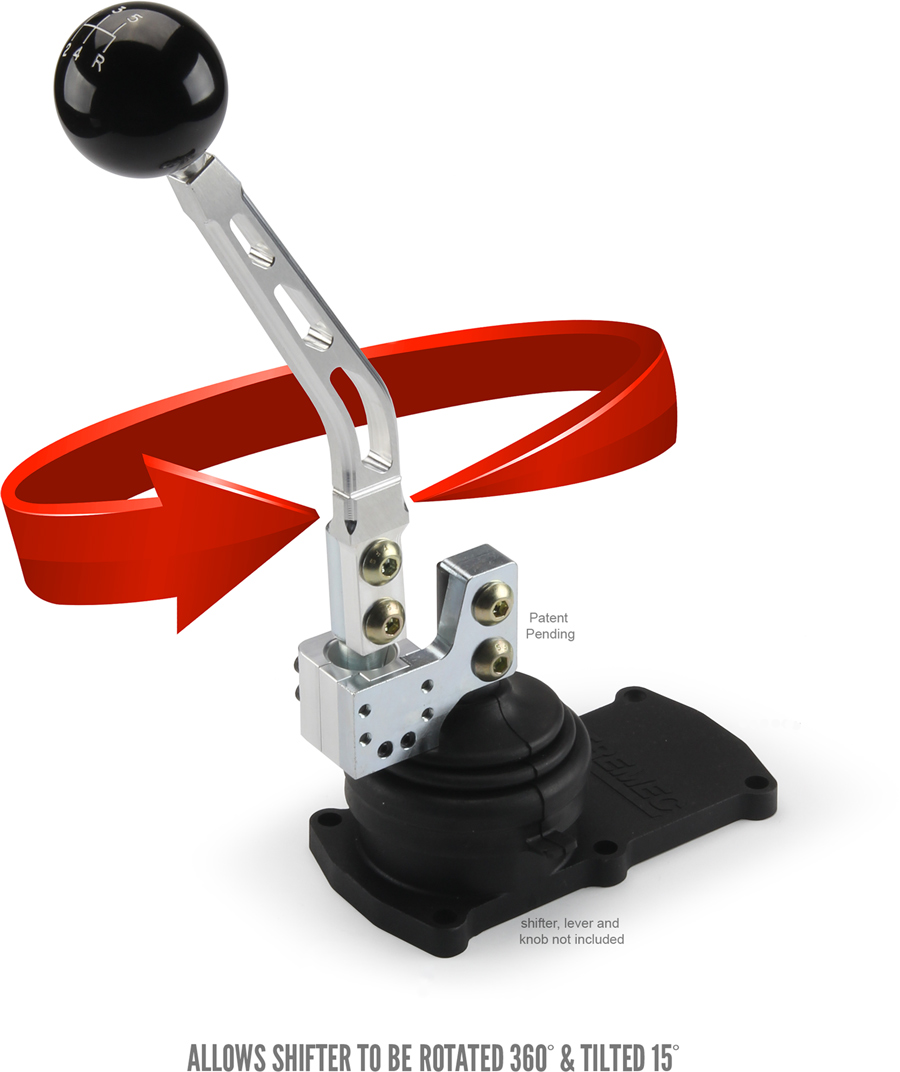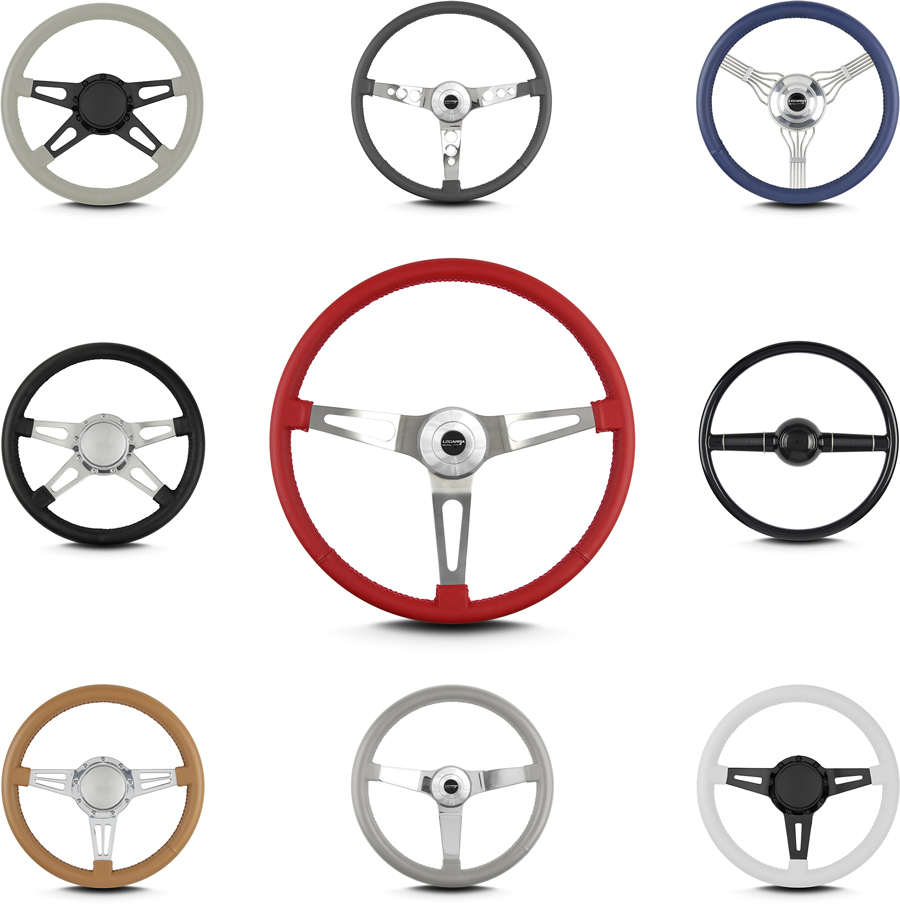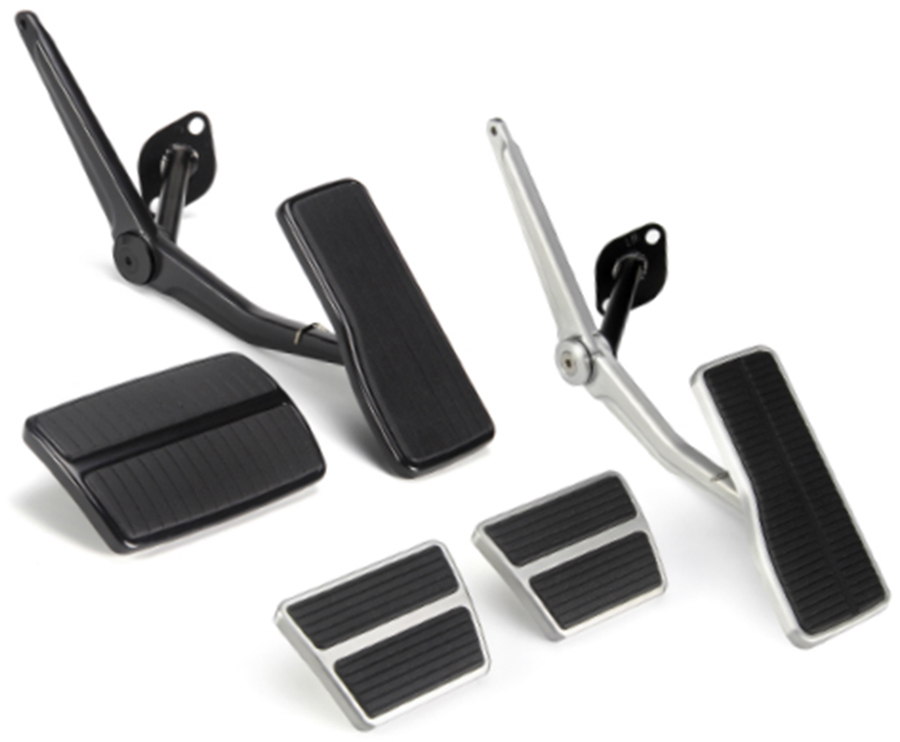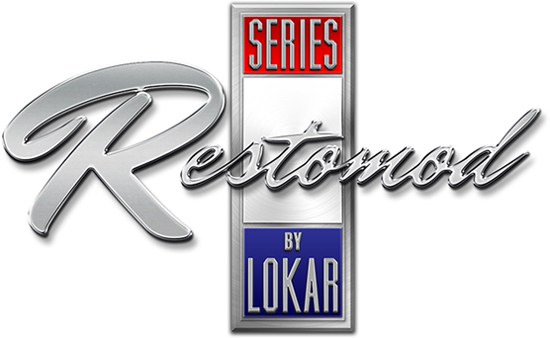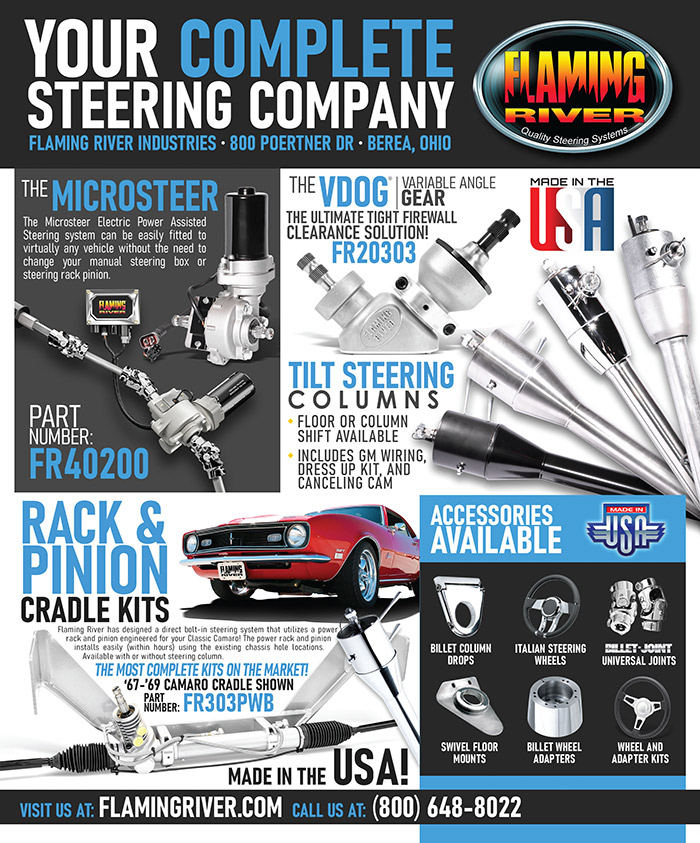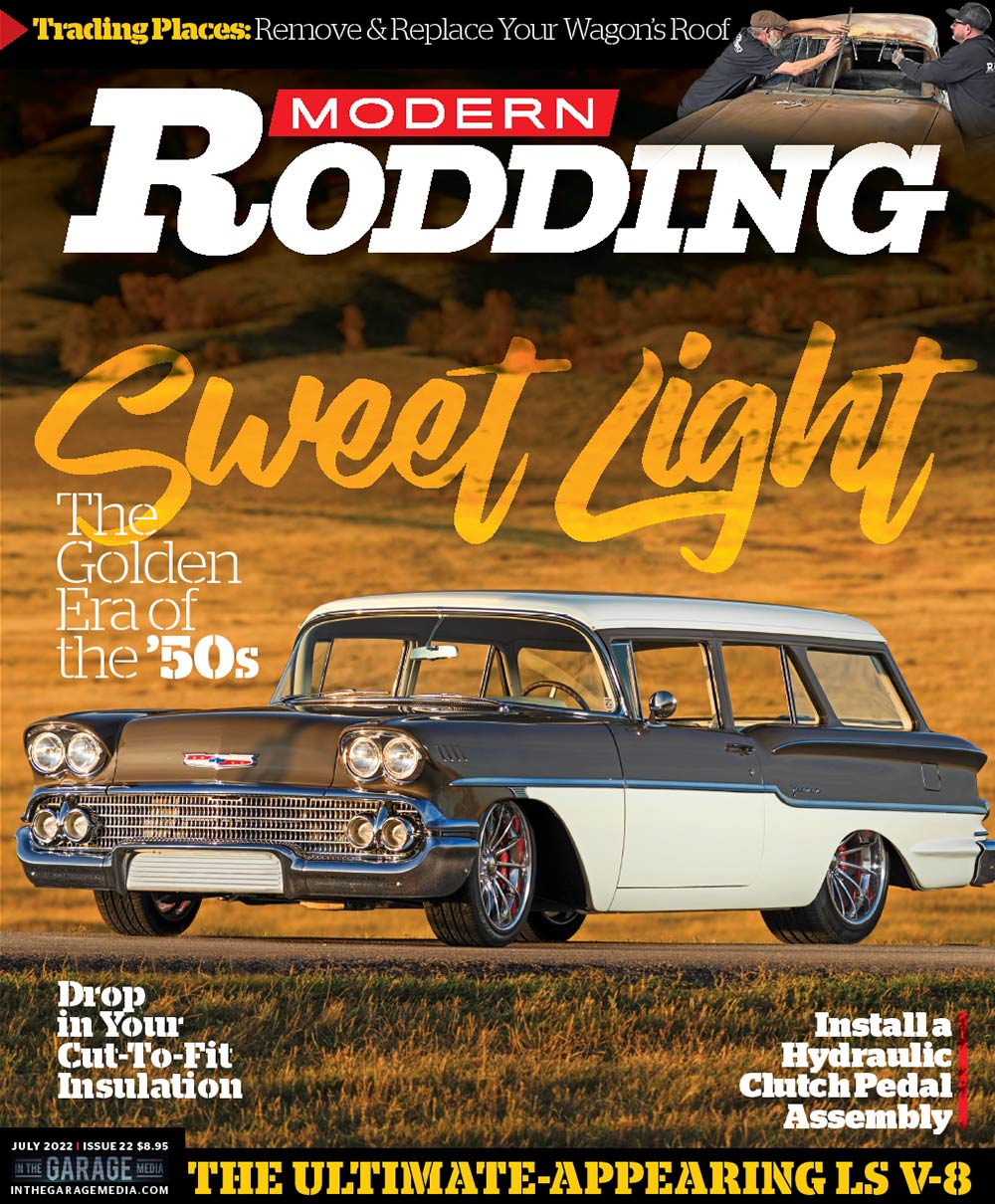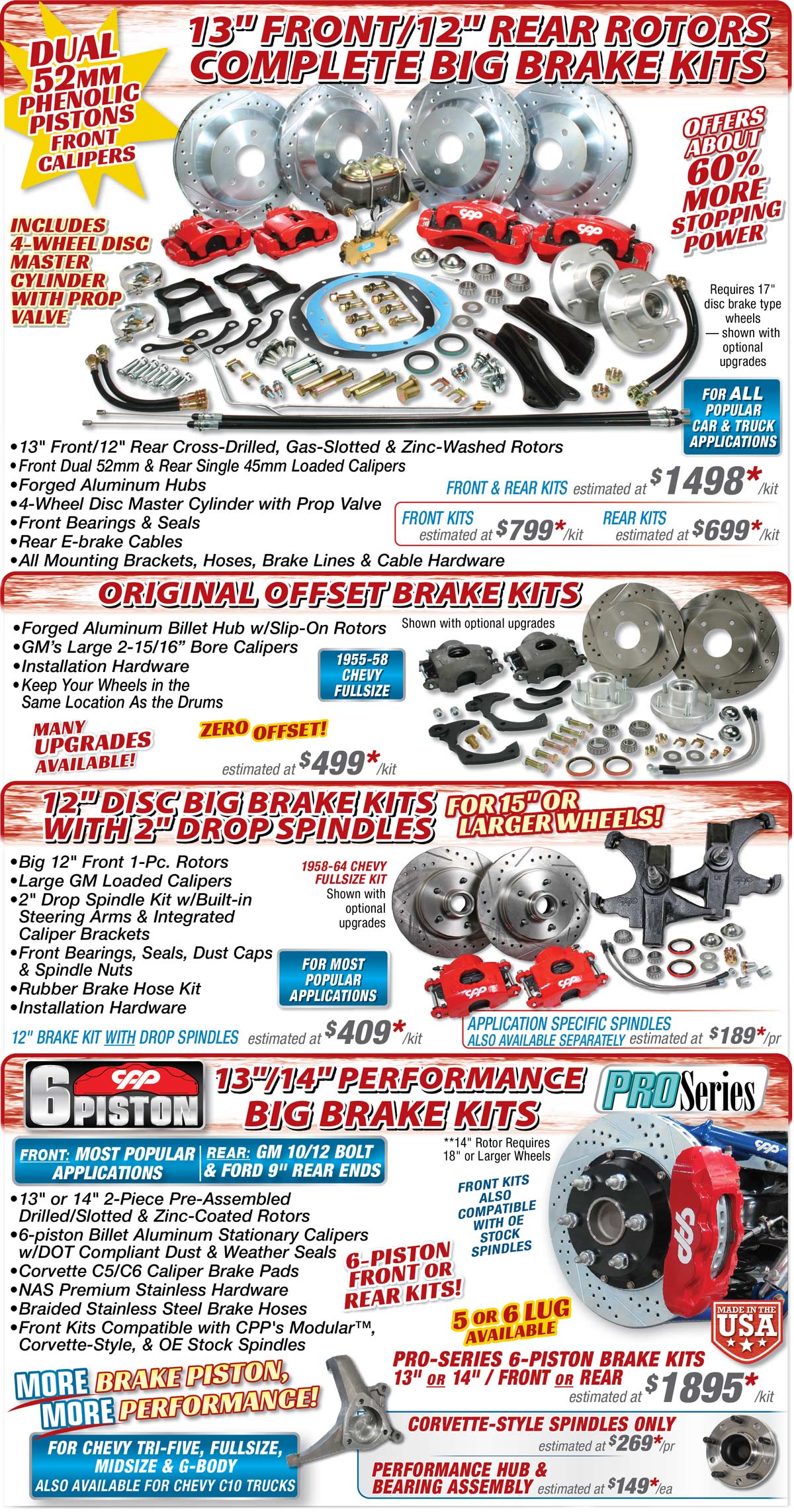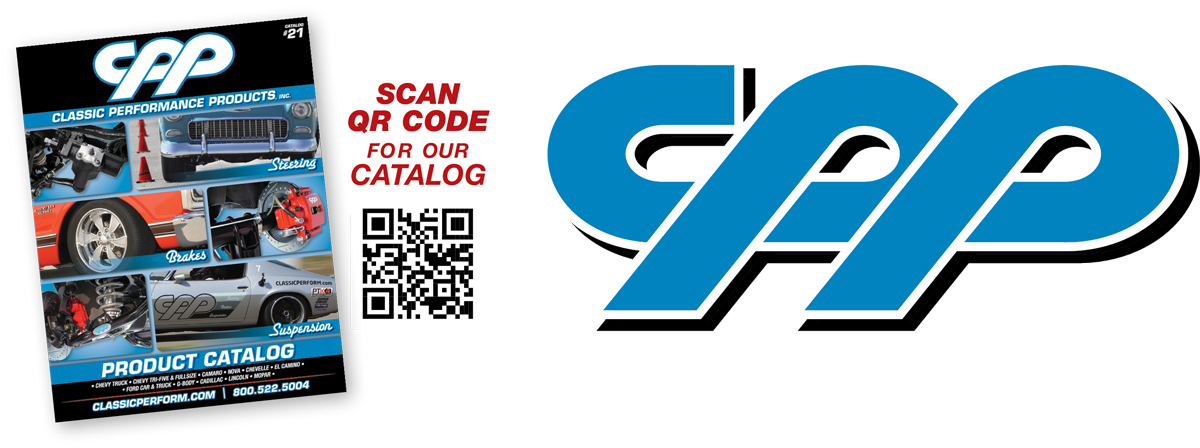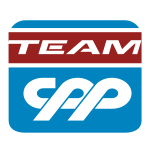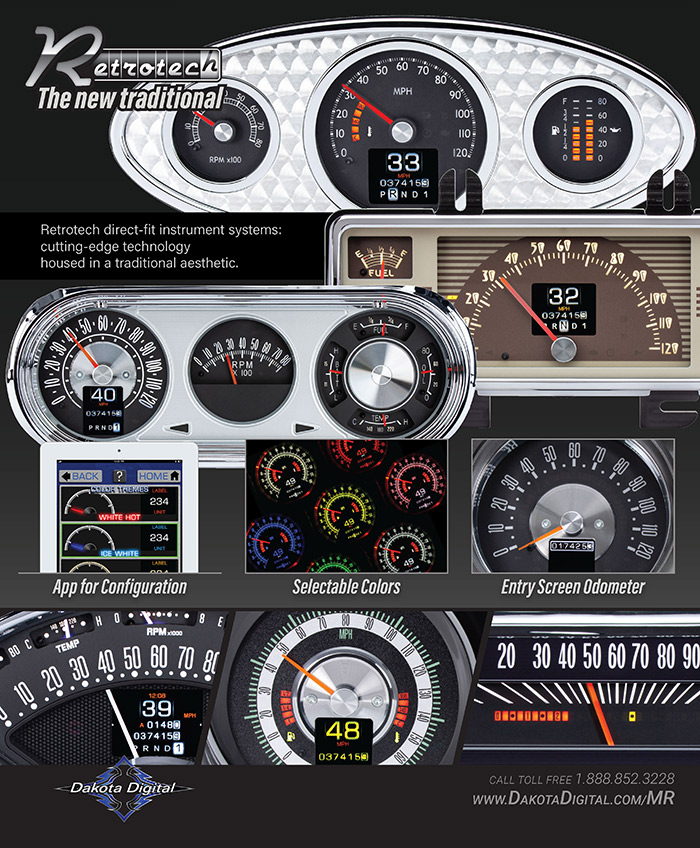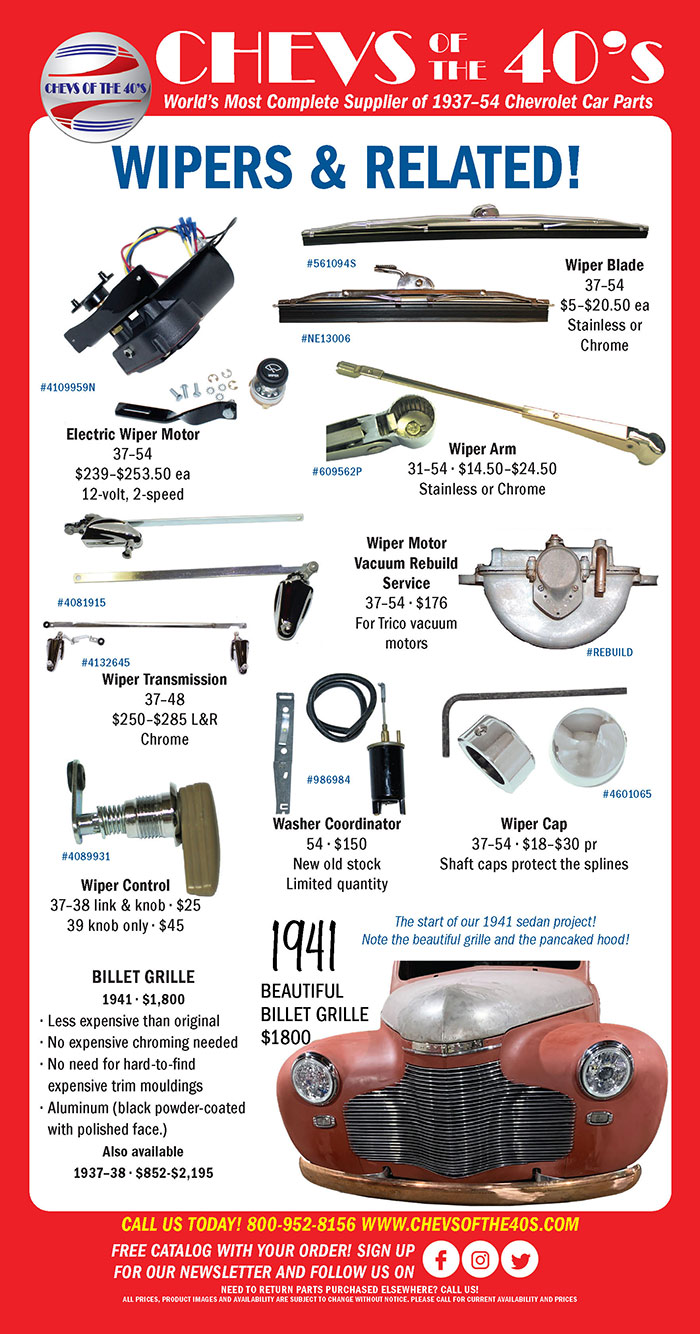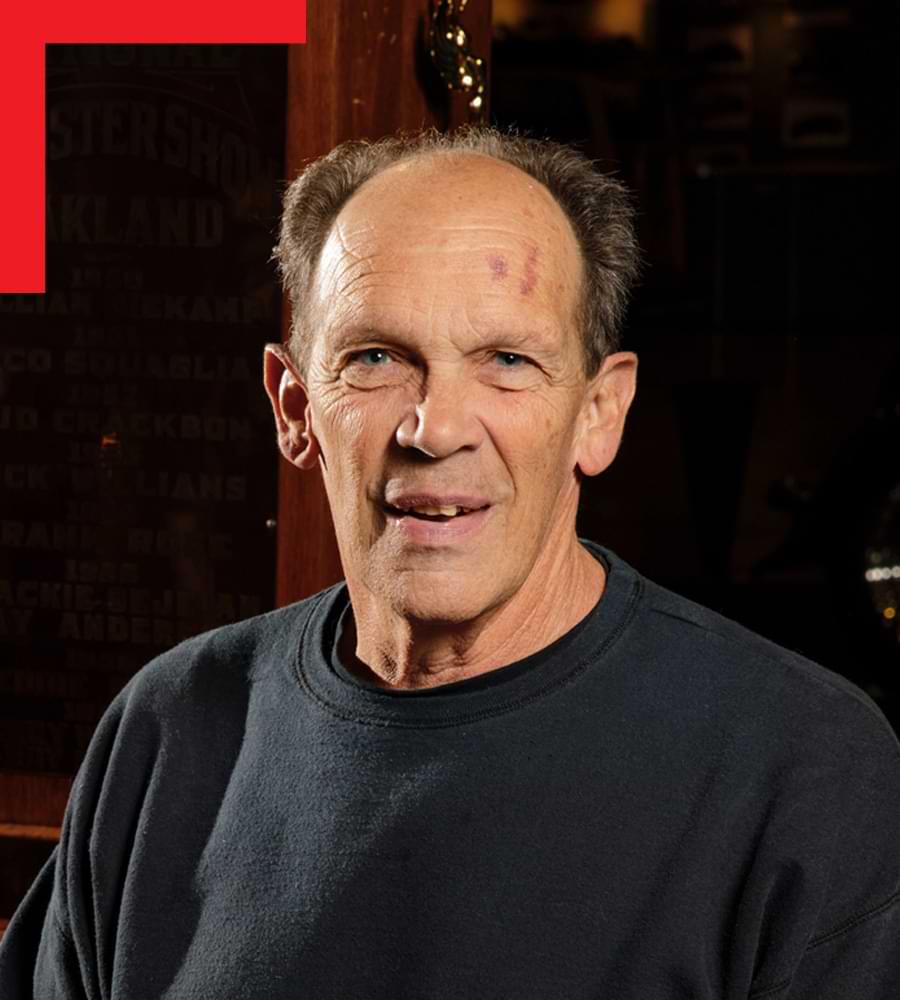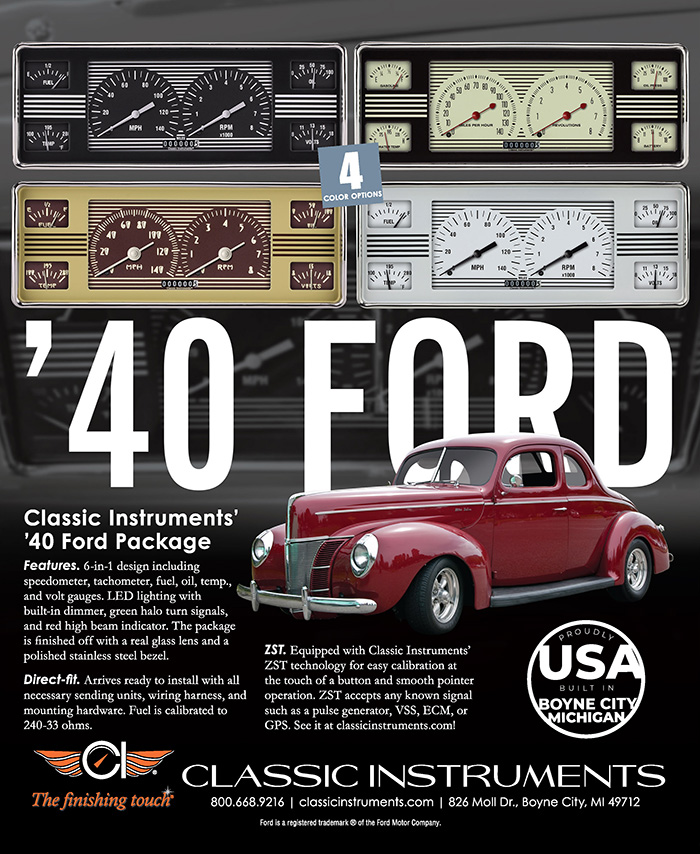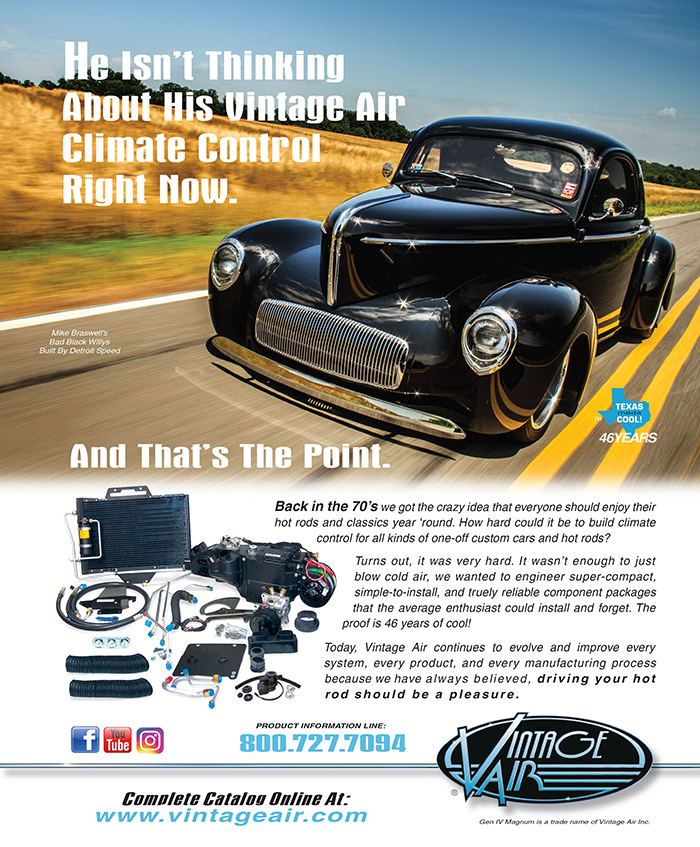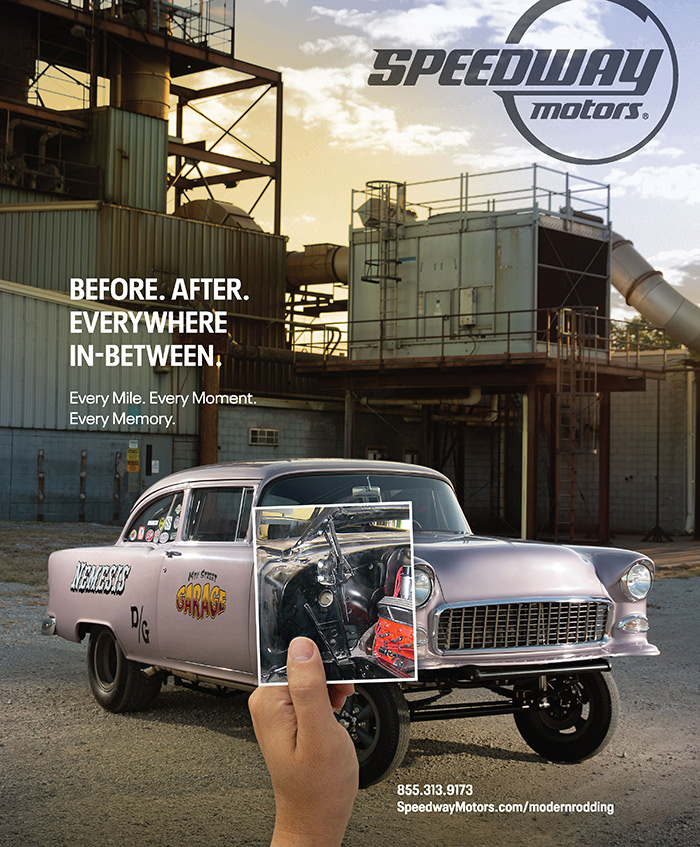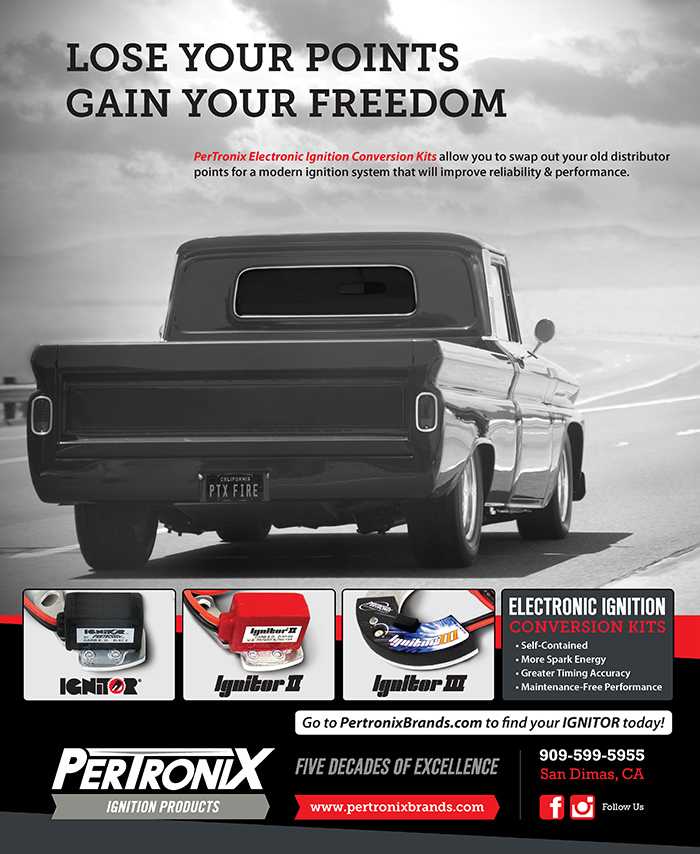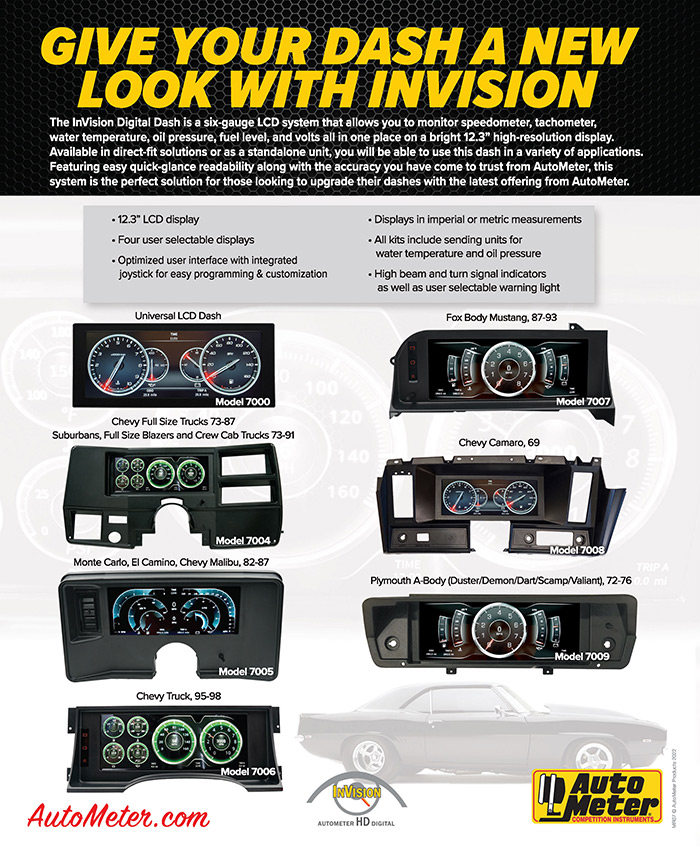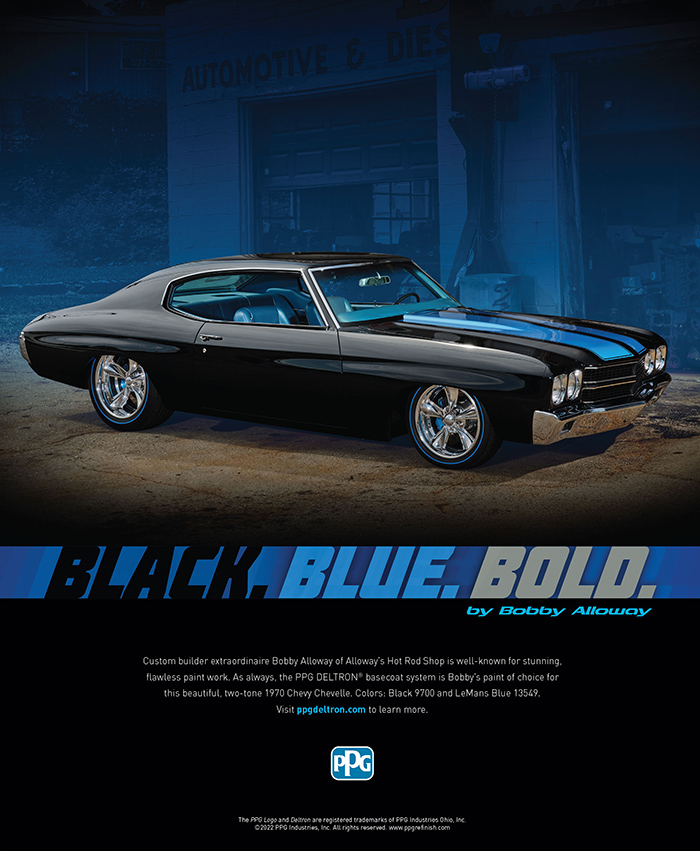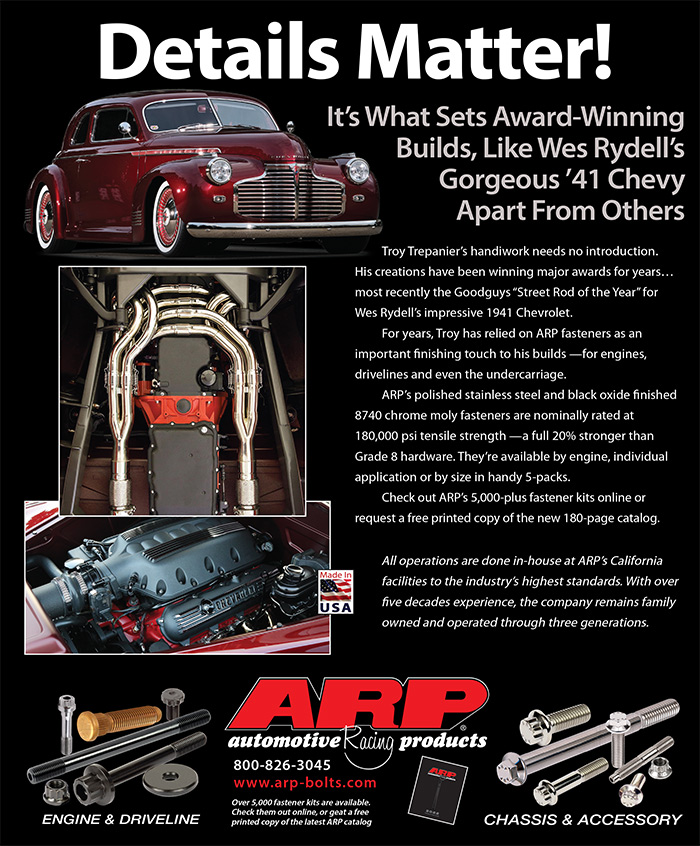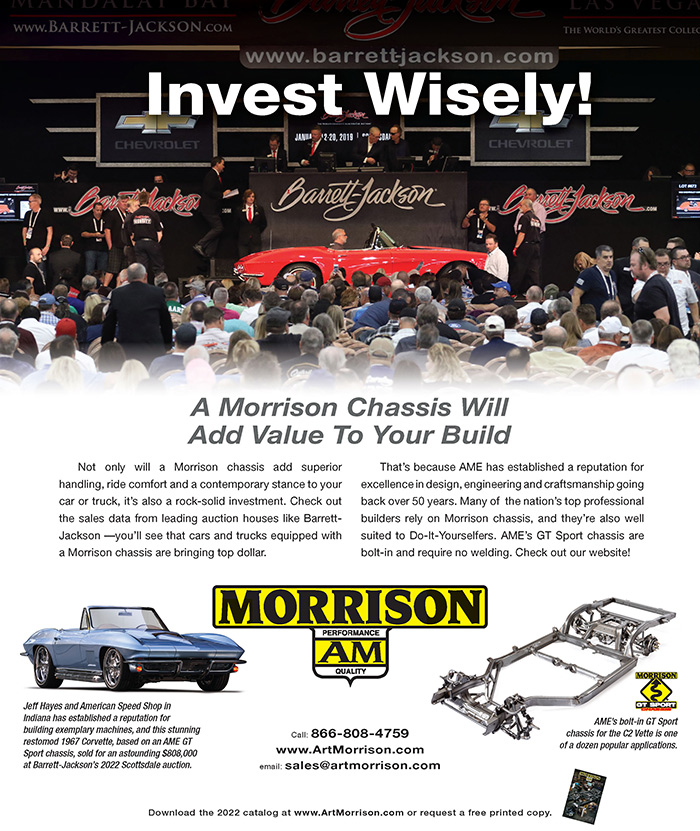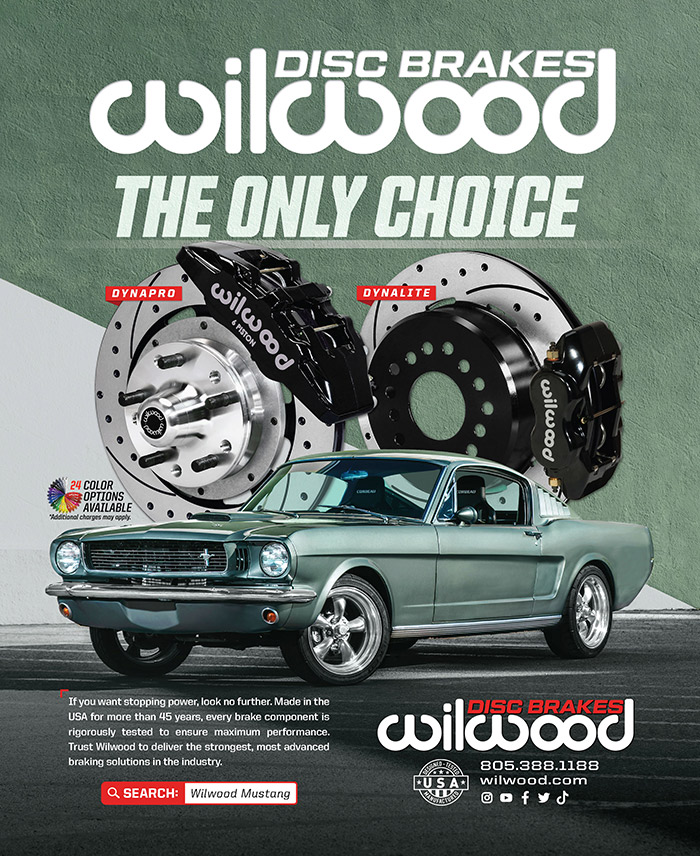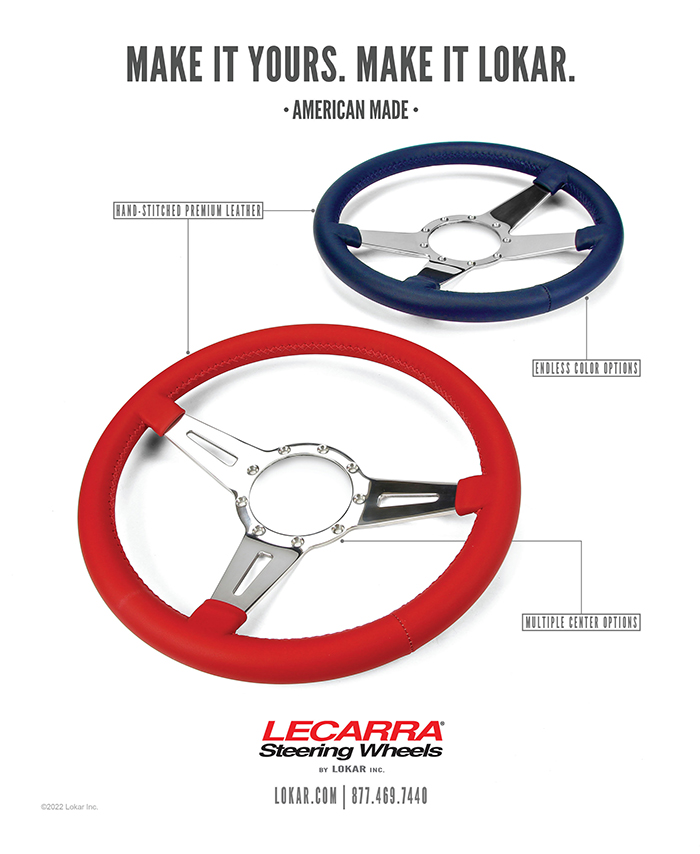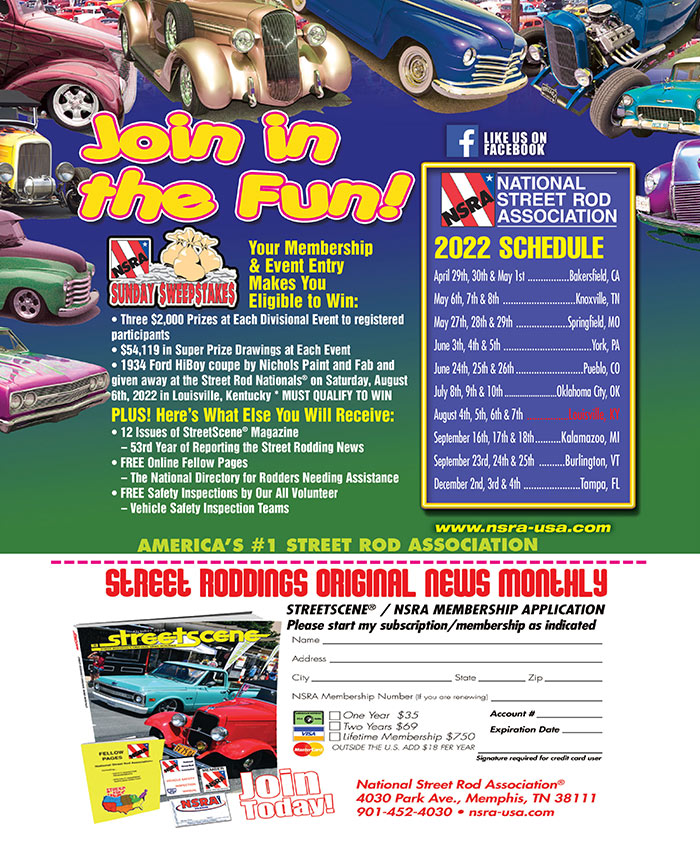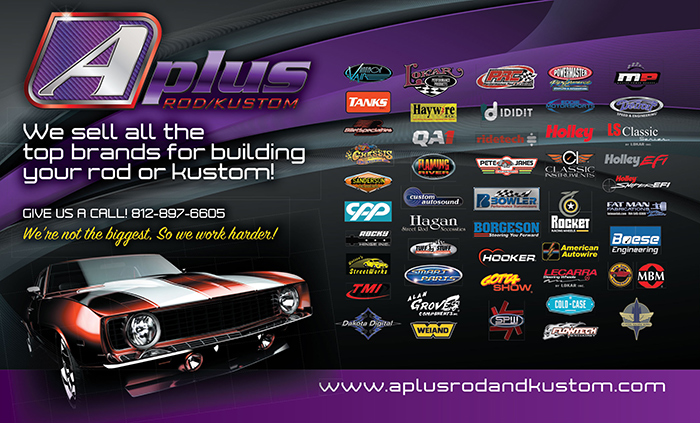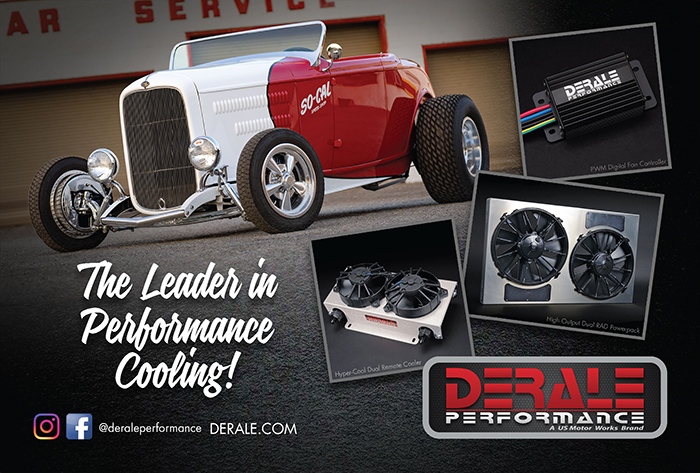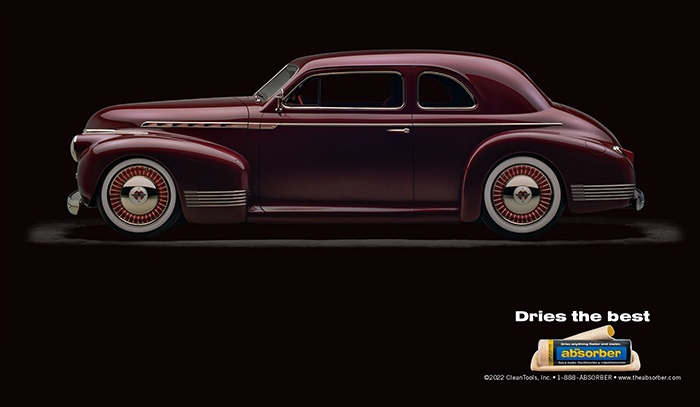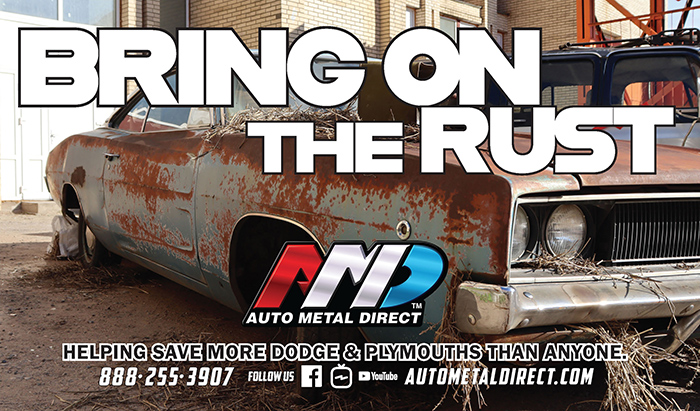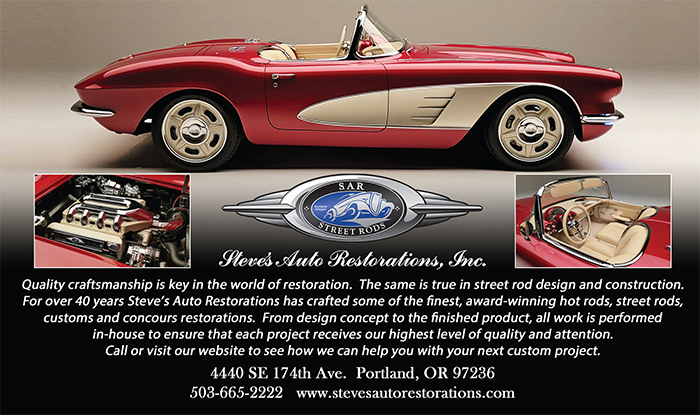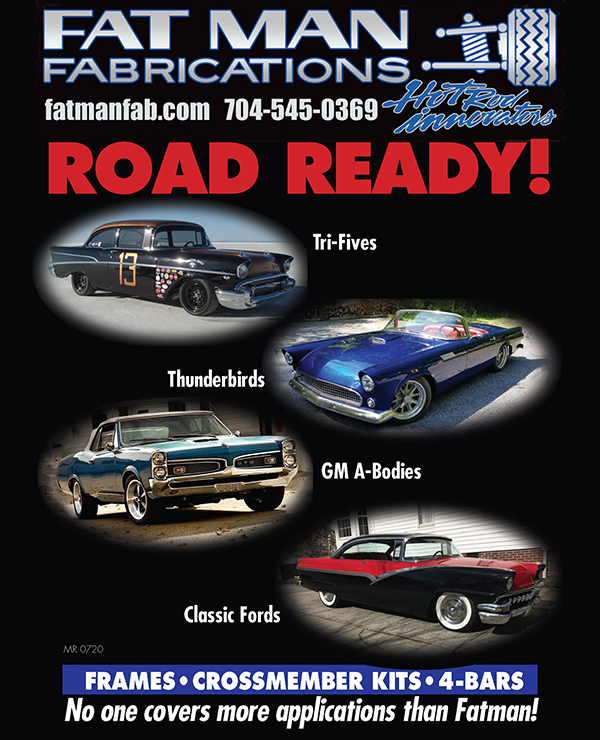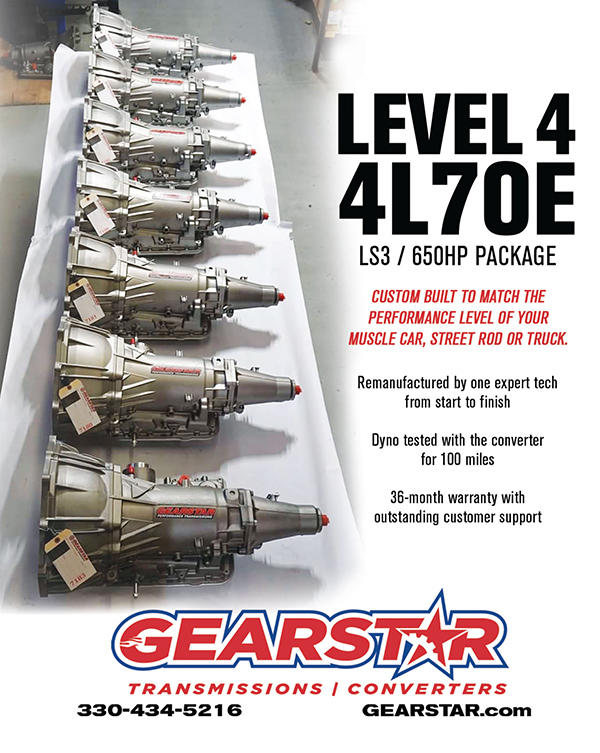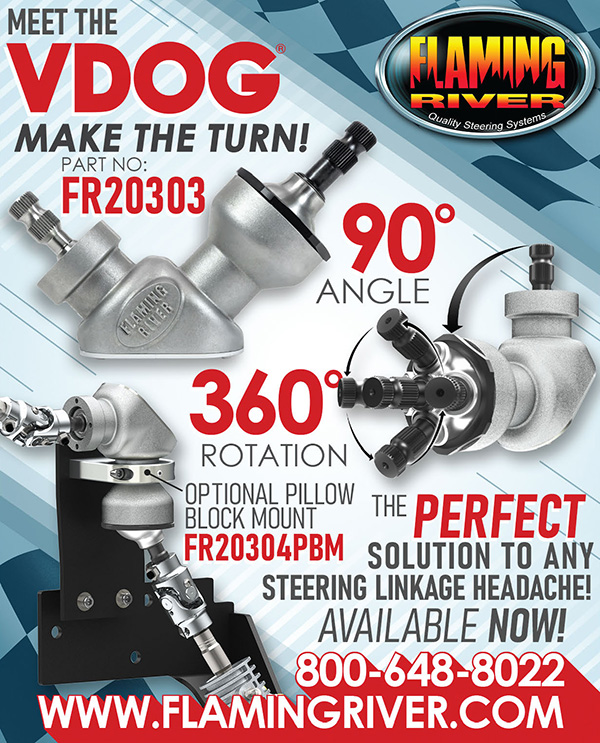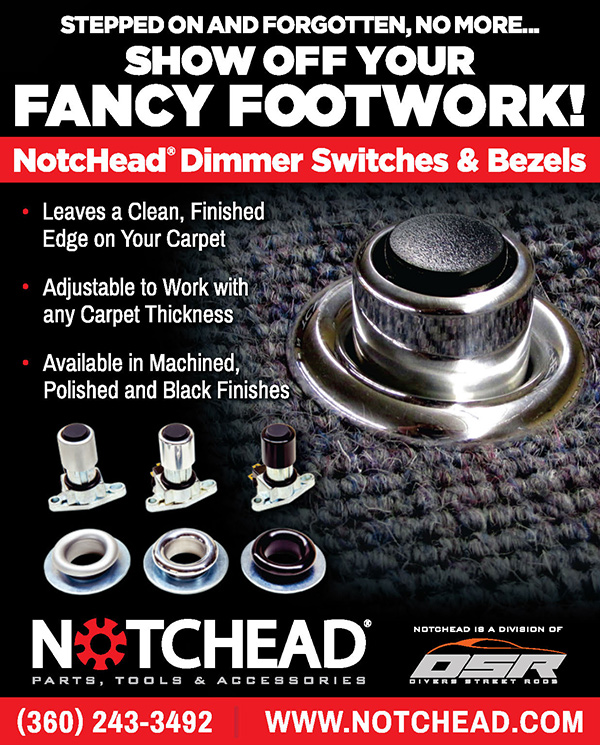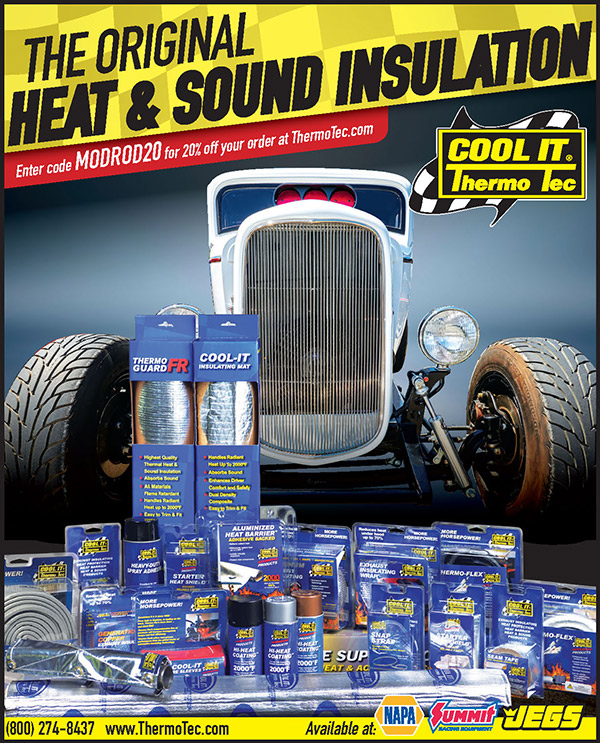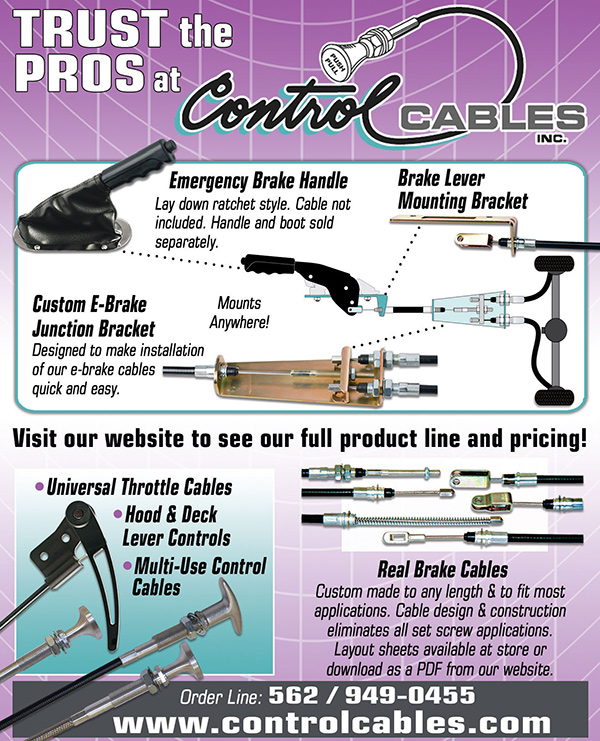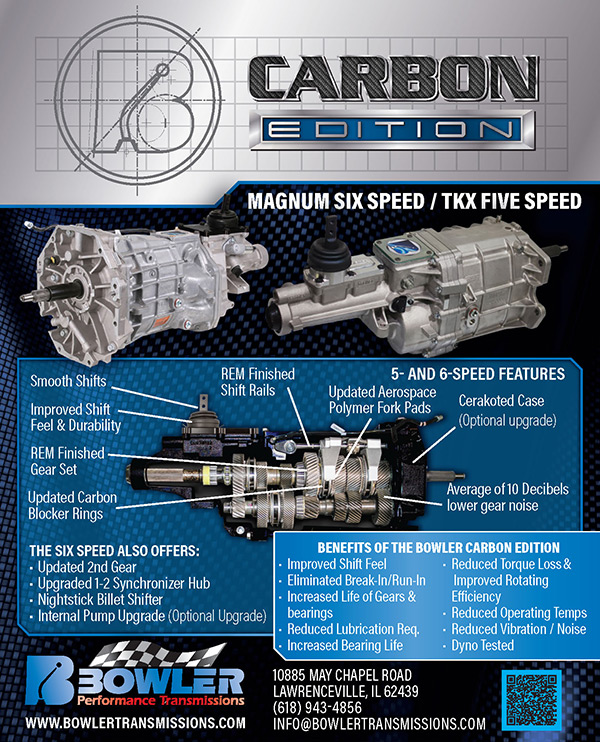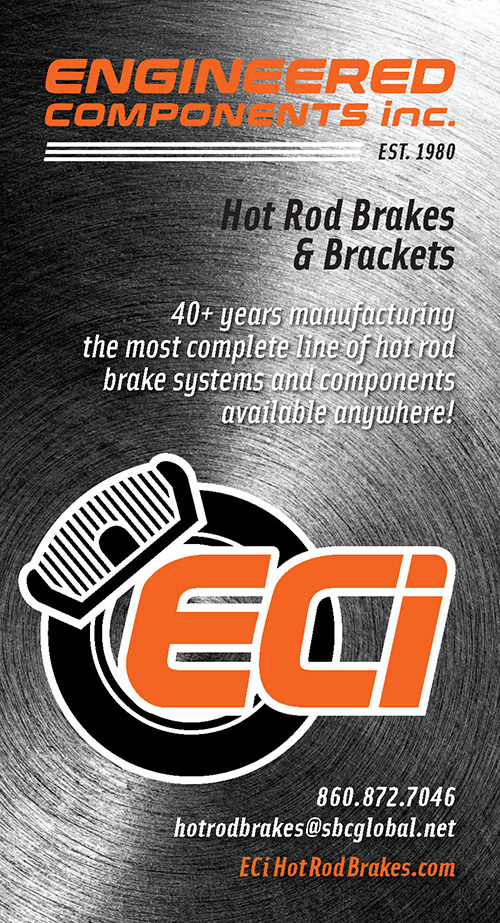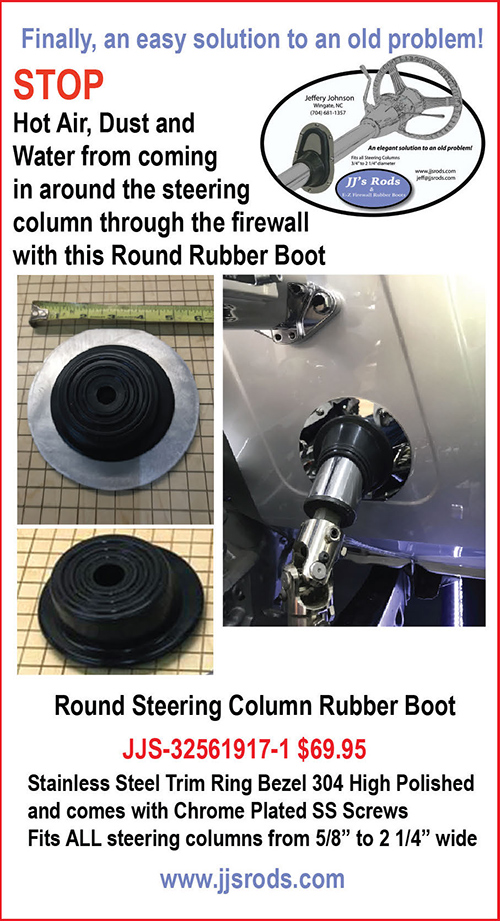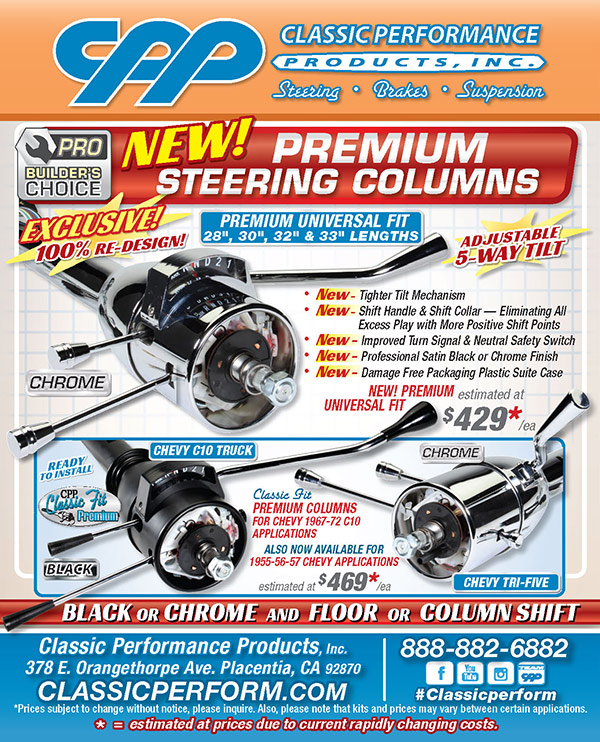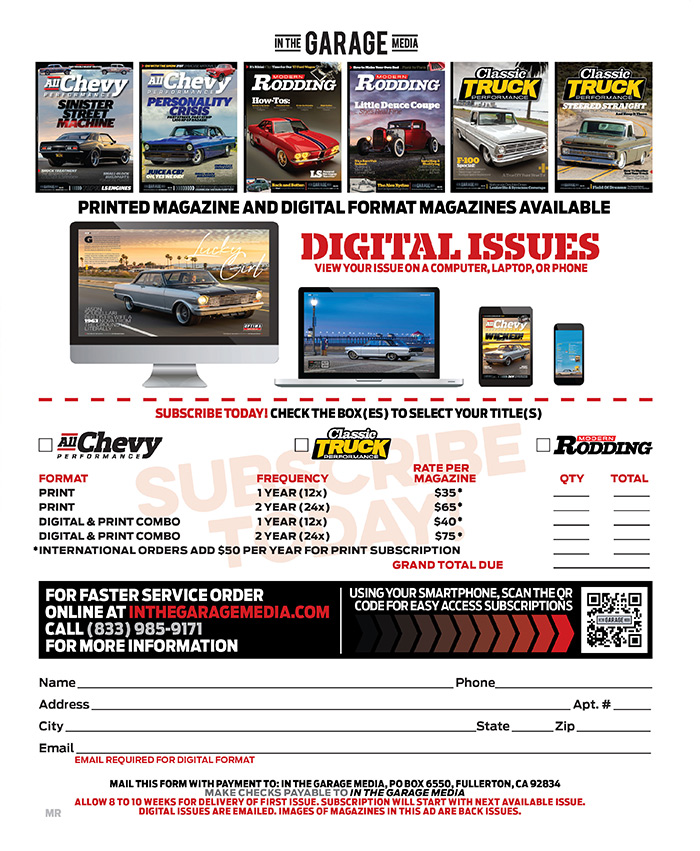
in Your
Cut-To-Fit
Insulation
Hydraulic
Clutch Pedal
Assembly
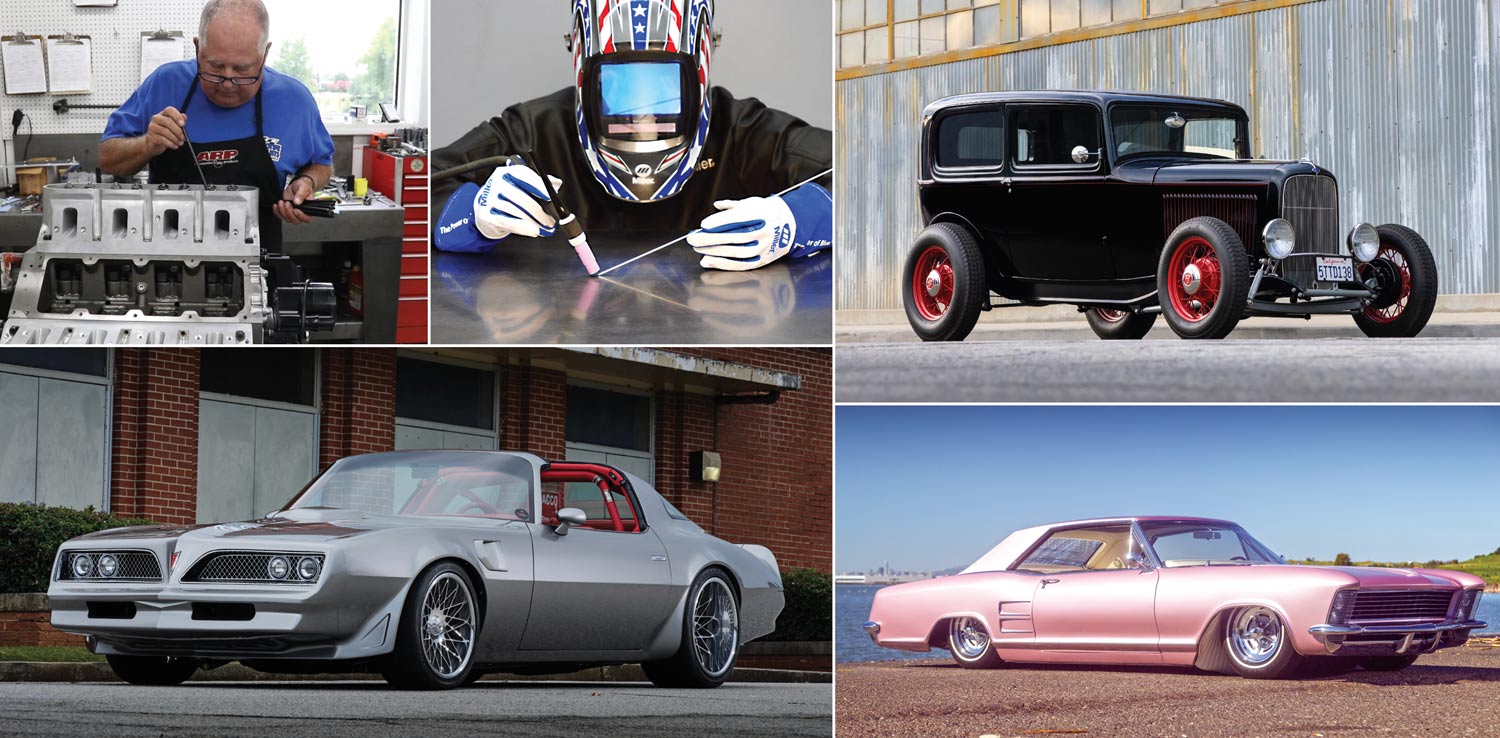
By Chris Shelton, Photography by Don Kates
By Dale M. Moreau, Photography by the Author
By Brian Brennan, Photography by Tim Sutton
By Brian Brennan, Photography by Wes Allison
By Brian Brennan, Photography by John Jackson
By Ron Covell, Photography by the Author
By Ron Ceridono, Photography By Alan Johnson
By Brian Brennan, Photography by Nate Nelson
By Brian Brennan, Photography by the Author
By John Gilbert, Photography by the Author & Brian Brennan
Photo by Don Kates
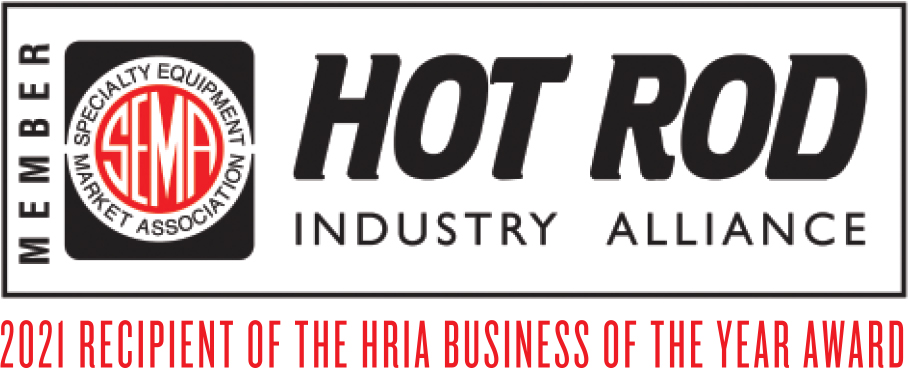
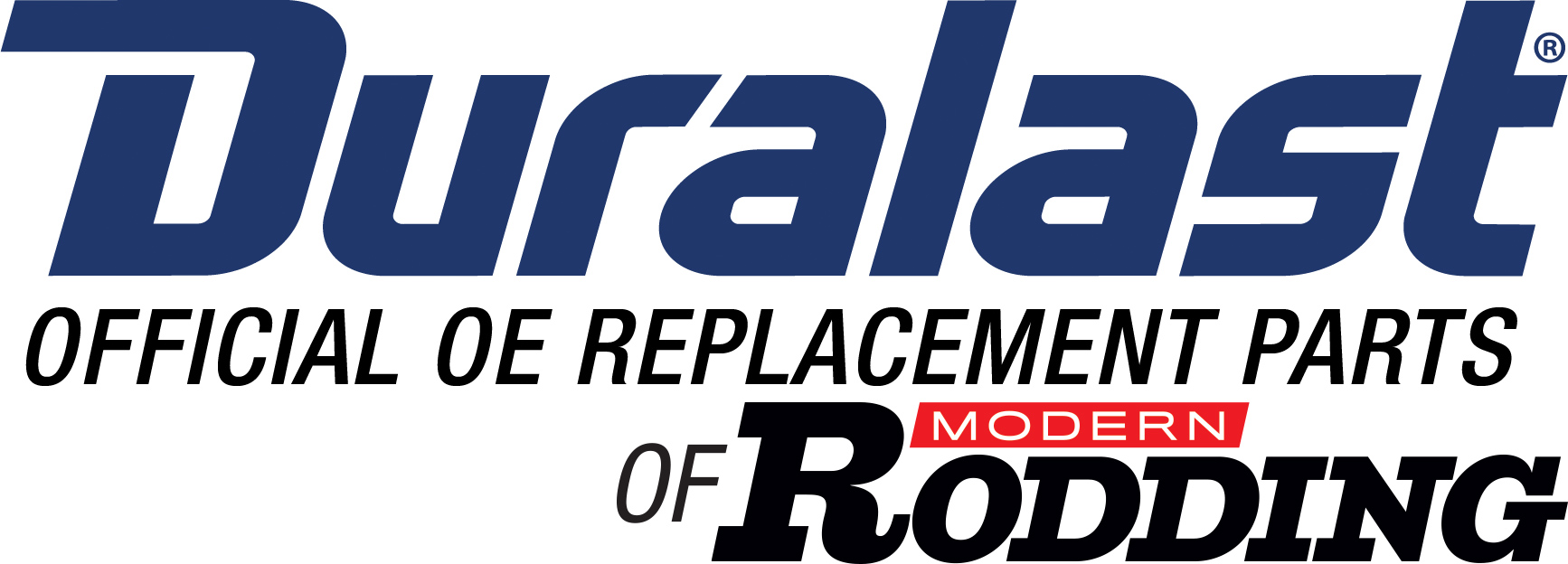

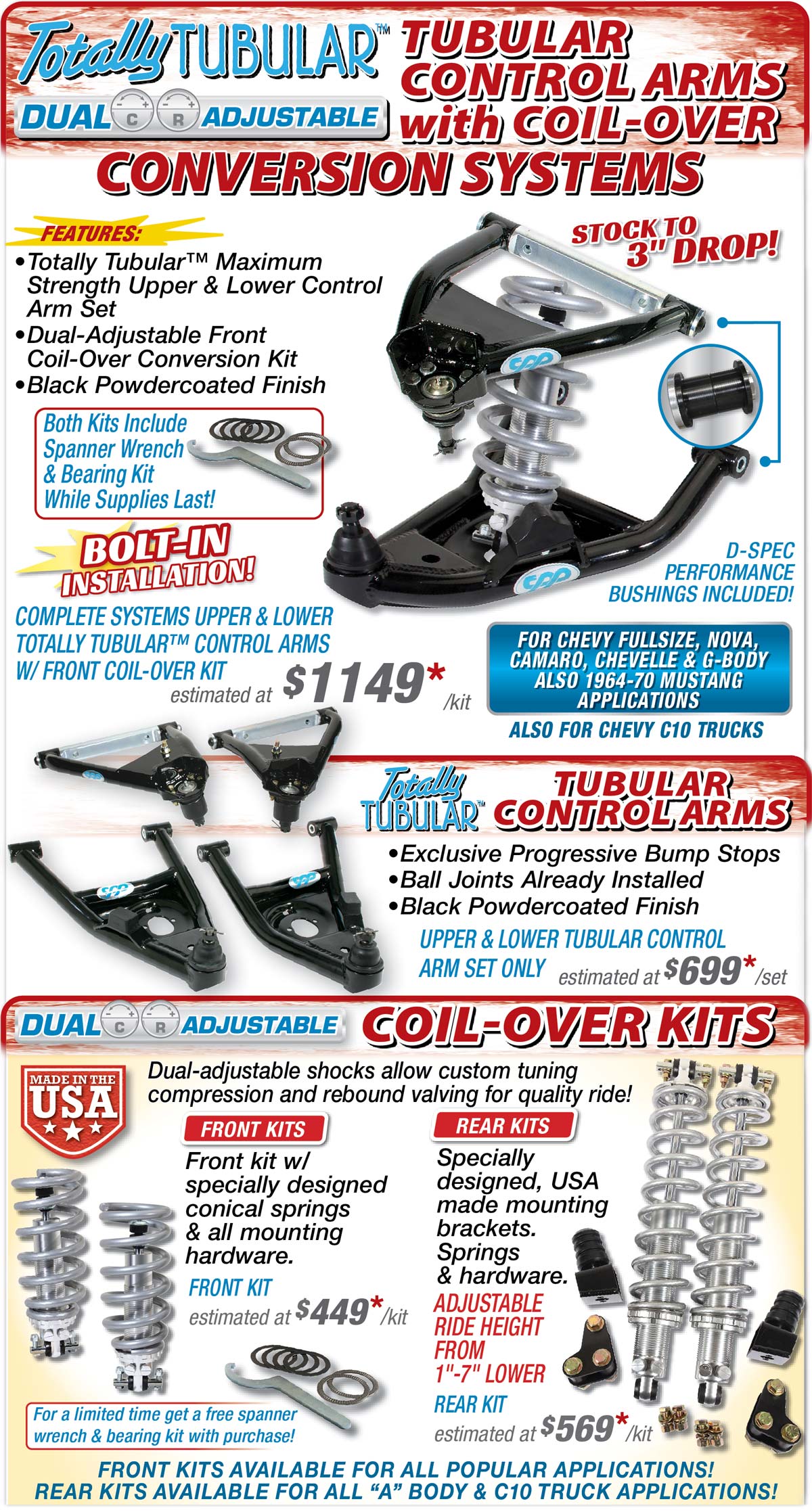
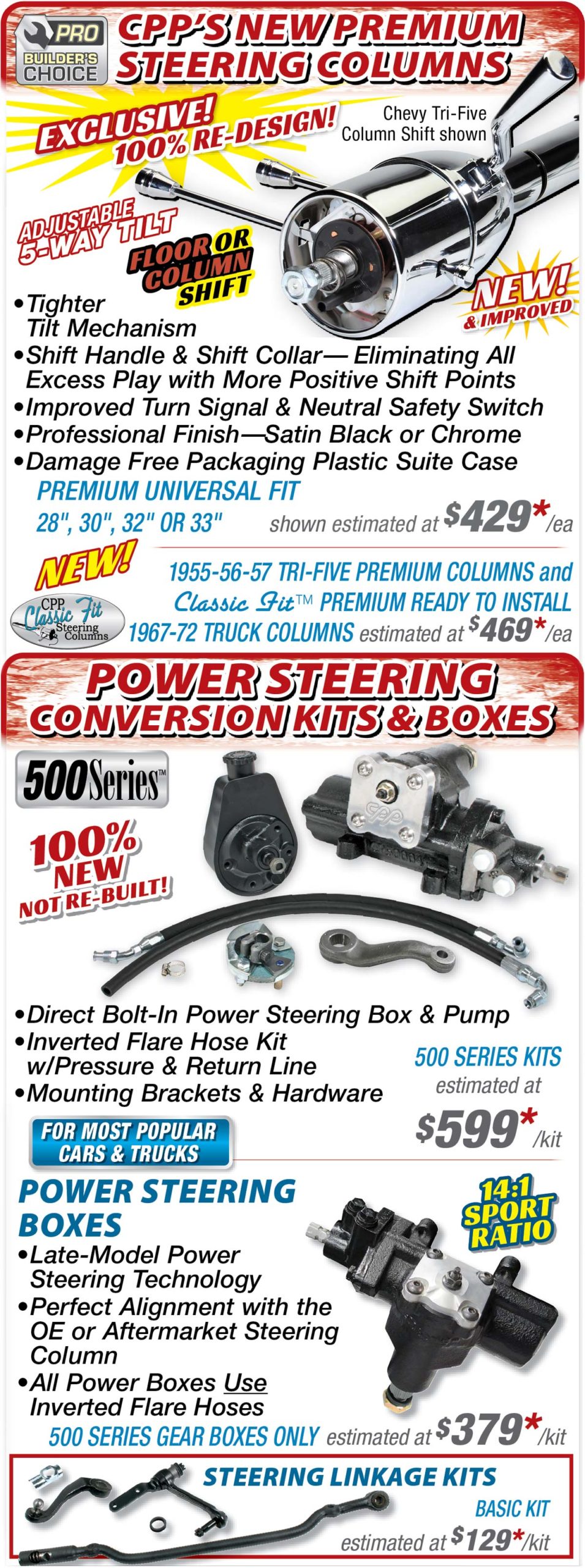
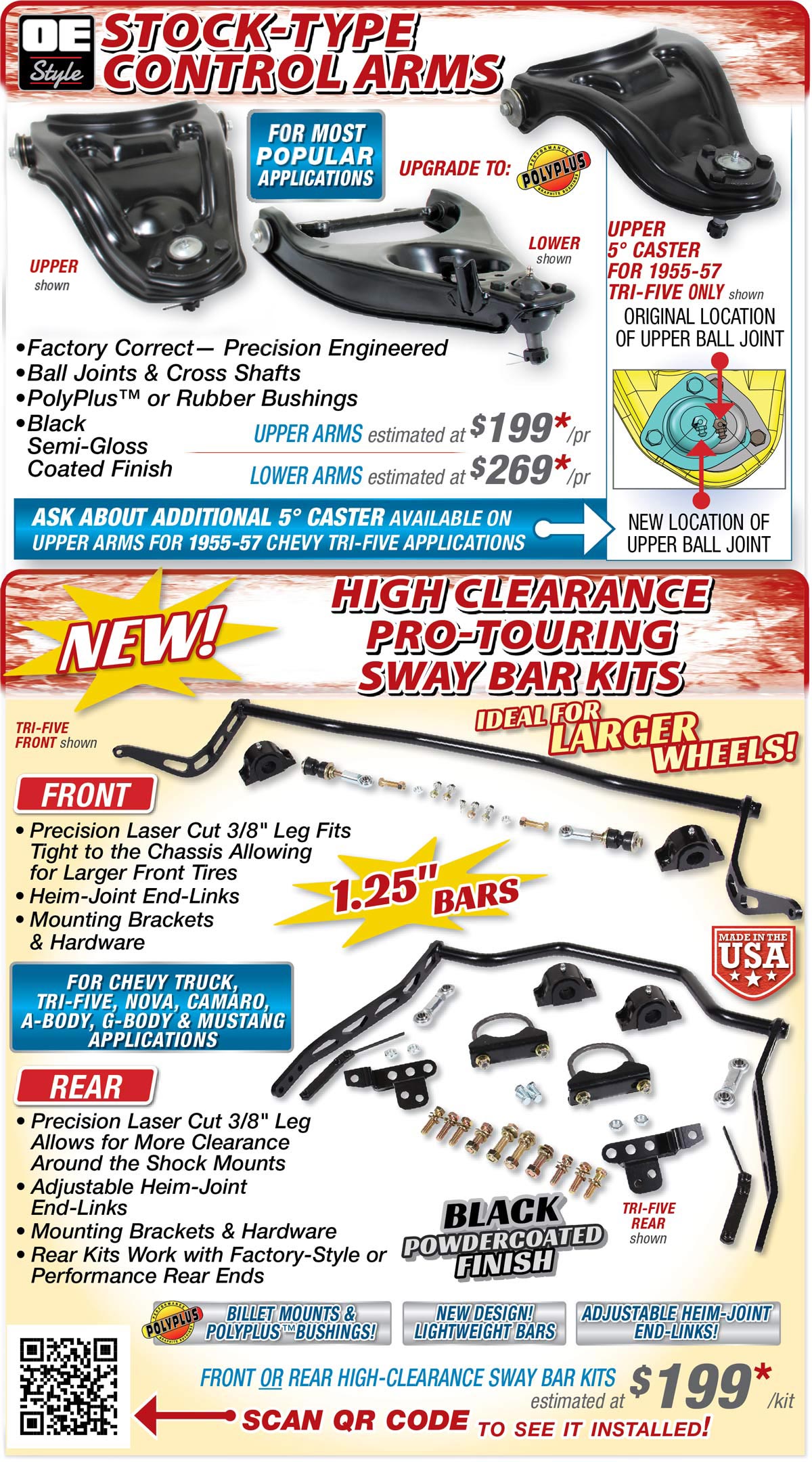
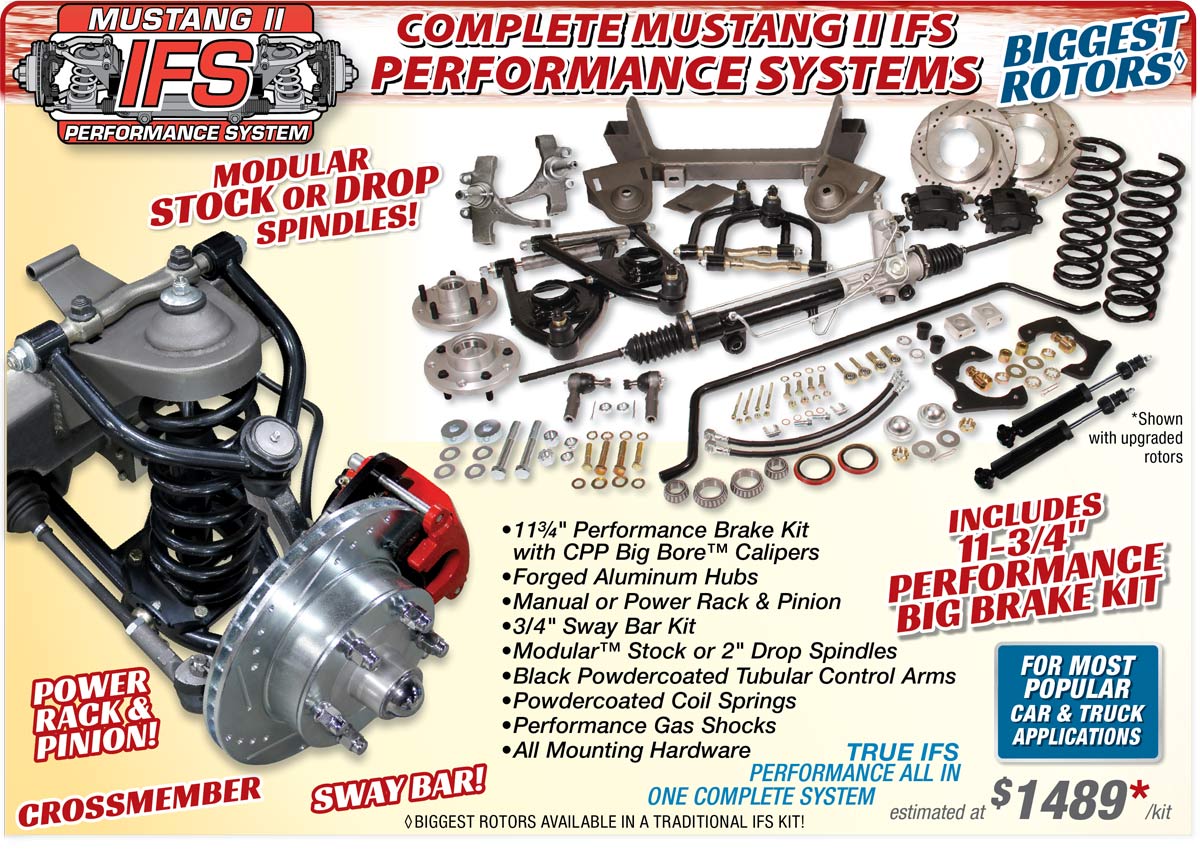
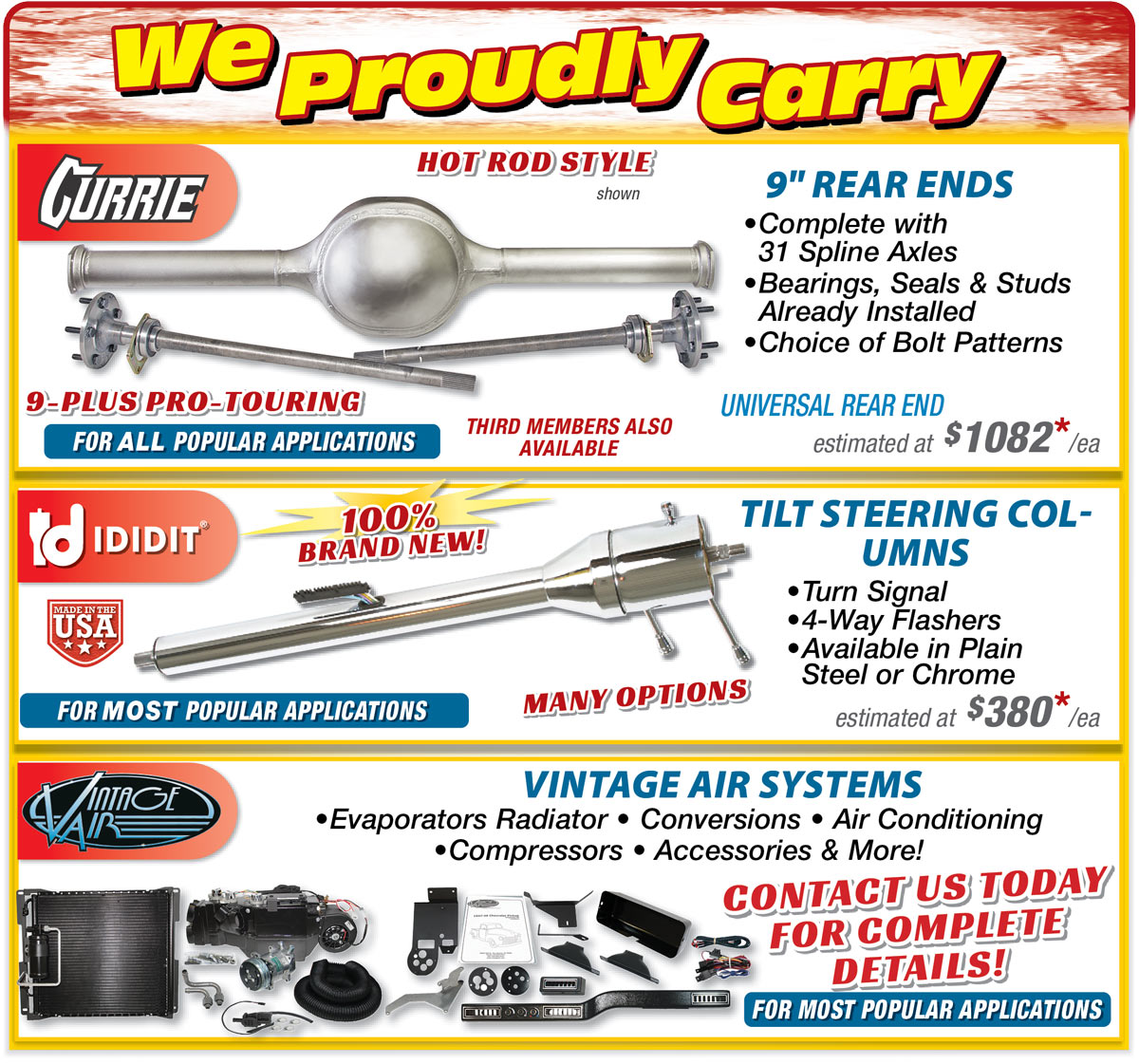

378 E. Orangethorpe Ave. Placentia, California 92870
#ClassicPerform

BRIAN BRENNAN
bbrennan@inthegaragemedia.com
TIM FOSS
tfoss@inthegaragemedia.com
YASMIN FAJATIN
yfajatin@inthegaragemedia.com
SARAH GONZALES
sgonzales@inthegaragemedia.com
ROB MUNOZ
rmunoz@inthegaragemedia.com
PATRICIA LUDI
pludi@inthegaragemedia.com
Wes Allison, Rodney Bauman, Gerry Burger, Tommy Lee Byrd, Ron Ceridono, Michael Christensen, Ron Covell, Grant Cox, Dominic Damato, John Drummond, Eric Geisert, John Gilbert, Joe Greeves, Ken Gross, John Jackson, Chadly Johnson, Barry Kluczyk, Scotty Lachenauer, Don Lindfors, Ryan Manson, Josh Mishler, Dale Moreau, Don Prieto, Todd Ryden, Jason Scudellari, Chris Shelton, Tim Sutton, Chuck Vranas, John Winter — Writers and Photographers
ModernRodding.com
AllChevyPerformance.com
ClassicTruckPerformance.com
InTheGarageMedia.com
subscription@inthegaragemedia.com
(833) 985-9171
Travis Weeks Advertising Sales Manager
Mark Dewey National Sales Manager
Patrick Walsh Sales Representative
ads@inthegaragemedia.com
InTheGarageMedia.com “Online Store”
For bulk back issues of 10 copies or more, contact store@inthegaragemedia.com

Copyright (c) 2022 In The Garage Media.
Printed in the USA.
The Modern Rodding trademark is a registered trademark of In The Garage Media.
 By Brian Brennan
By Brian Brennan emories are great. Of course I sometimes struggle to remember my memories. When I do then it’s all cool. I figure given the amount of time I’ve been around hot rodding, all the cars that I’ve seen, and all the hot rodders that I have hung around with, I should have many more memories than I have. I figure that’s since I’ve forgotten many memories so they are no longer memories. I hope that doesn’t mean all those great experiences really didn’t happen. Oh well.
What got me going down my hot rod memory lane was a recent visit to a longtime friend’s shop. He’s a longtime hot rodder, builder, and painter—Dave Shuten. He heads up the restoration and creation division of Galpin Speed Shop as the lead builder. From his craftsman-like hands and always-active mind comes a wide assortment of hot rods with varied backgrounds, from customs to race cars to movie cars to everyday hot rods.

 Advanced Plating is 60 Years Young!
Advanced Plating is 60 Years Young!
The roots of Advanced Plating started with founder Elton Cole, who first opened shop in Old Hickory, Tennessee, during the spring of 1962. Like several businesses, the shop changed hands a couple of times through the years. Then, in 1985, while racing motorcycles, Steve Tracy started his relationship with Advanced Plating, leading to he and his wife, Sheri, becoming sole owners in 1989.
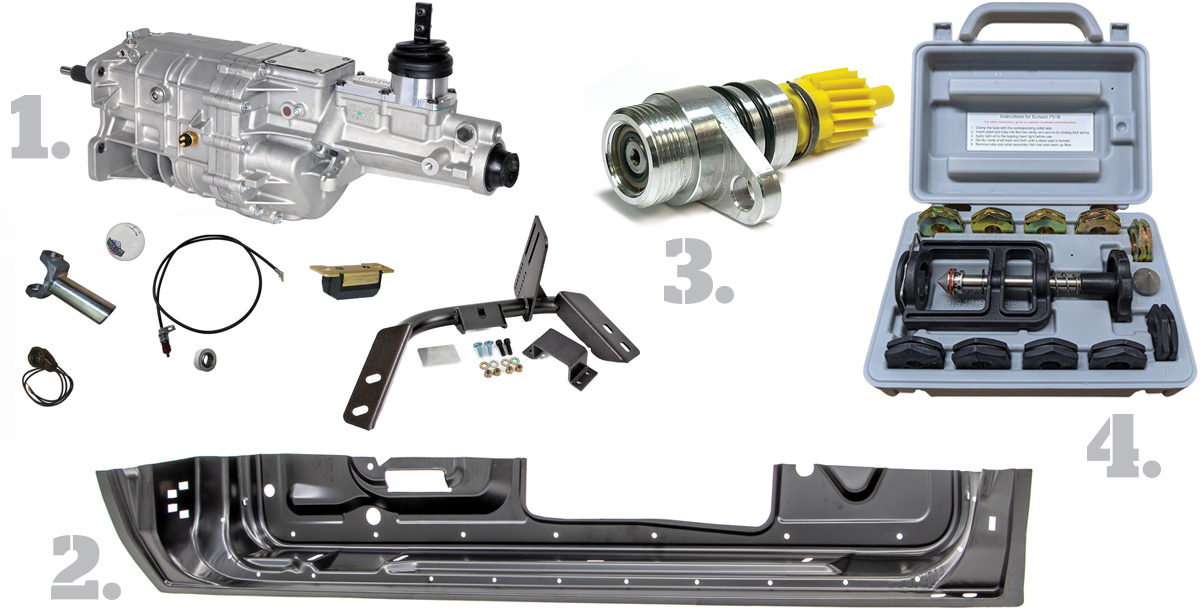
 By Brian Brennan
By Brian Brennan
1. Pro-Fit TKX Five-Speed Systems for the F-Body
The new Pro-Fit five-speed system features the new TREMEC TKX transmission with 600 lb-ft of torque capacity with shifts up to 7,800 rpm. The system comes with a new crossmember that allows the factory torque arm to be reused and can be adjusted. It comes with all the installation parts and a new custom-built driveshaft for easy installation. Pro-Fit kits are covered by American Powertrain’s two-year warranty and comprehensive tech support. Six-speed kits are also available.

 Photography by Don Kates
Photography by Don Katesardly anything about 1958 was like any other year that preceded it, at least for Chevrolet’s passenger-car division. That year, the company changed just about everything about its cars, all the way down to what it called them. Let’s look at Derek and Eileen Eisenbeisz’s ’58 Chevy Yeoman two-door wagon and its transition into a top-of-the-line hot rod.
What happened to the wagons is practically unspeakable, at least among contemporary wagonistas. After watching two-door wagon sales languish during the three years that preceded, Chevrolet all but killed the configuration for 1958. You could still get a Nomad that year, but it was just a trim package on a regular ol’ four-door wagon. Chevrolet did build a two-door wagon but banished it to the bottom rung and called it Yeoman, a historic title for family farmers.
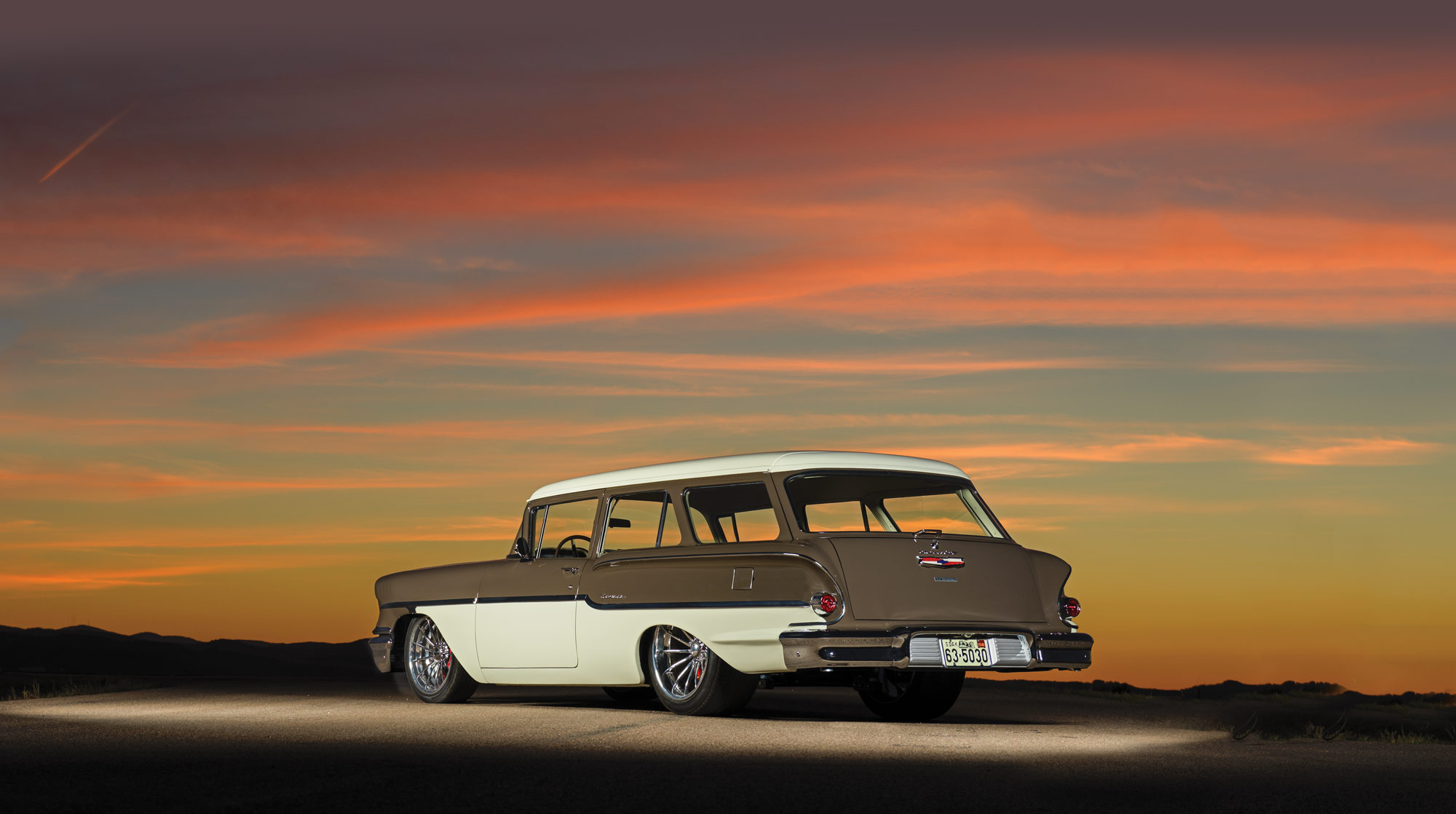
Modern Rodding Tech

1. TIG machines come in a broad range of sizes. Even the smallest machine in this lineup can do most of the welding tasks a car builder will need.
By Ron Covell  Photography by THE AUTHOR
Photography by THE AUTHOR
e’ve covered MIG welding, which for many years has been the most widely used process for both amateur and professional car builders. Since MIG welds are strong and fast, and the learning curve is easy to master, why would you consider anything else? That’s exactly what we’ll cover in the basics of TIG welding.
Having more control over each parameter of the welding process also makes it easier to get the dime-on-dime look that many builders prize. It can also help with getting sufficient penetration in challenging situations, and to tailor the welding arc to make it ideal for any weld joint configuration and for a broad range of material thicknesses.


 Photography by THE AUTHOR
Photography by THE AUTHORrom the earliest days of young hot rodders, the ’39 Ford DeLuxe coupe was the choice of many. For one thing, old Henry finally caved in and started equipping his Fords and the new Mercury line with hydraulic brakes. Another advancement Ford made was to be able to stamp larger pieces of their bodies, making less time for assembly. In comparing the ’39 Ford coupe to the ’38, you can see the loss of the bead line on the rear of the top. One more design change between the two years was the rear fenders. In the ’38, they extended out beyond the body, and the next year they tucked them in, making the beautiful rear of the cars extended in the ’40 model year.
Modern Rodding TECH
InTheGarageMedia.com

A Look Under the Hood of America’s Most Beautiful Roadster for 2022
 Photography by Alan Johnson
Photography by Alan Johnsont’s no secret that one of the keys to seeing your name engraved on the America’s Most Beautiful Roadster (AMBR) trophy is to build a car with meticulous attention to detail. In the case of Jeff Breault’s 2022 AMBR winner “Lucille,” the phrase “attention to detail” doesn’t begin to describe the effort put into the construction of this ’34 Chevy roadster.
Breault has been a lifelong GM guy and the idea of building this roadster has been with him for years. He describes his vision as “A car that combines the look, feel, and attitude of a traditional roadster but benefits from cutting-edge engineering and technology.” When a suitable candidate to make this vision become a reality was found, the all-original ragtop was delivered to Tim Devlin and his crew at Devlin Rod and Customs (DRC) to begin its transformation from stocker to shocker.


 Photography by Tim Sutton
Photography by Tim Suttonhe picture-perfect setting along the Bay Area coastline in NorCal presents an idyllic view of Bill Ganahl’s ’64 Buick Riviera. Did you know that “Riviera” translated from its Latin origins means “coastline”? General Motors wanted their new Buick luxury car to evoke the allure of affluence and the coastal lifestyle along the French Riviera. Well, times have changed, but we can rest assured the ’64 Buick Riviera continues to evoke all things good.
 Photography by THE AUTHOR
Photography by THE AUTHOR  Videography By Ryan Foss Productions
Videography By Ryan Foss Productions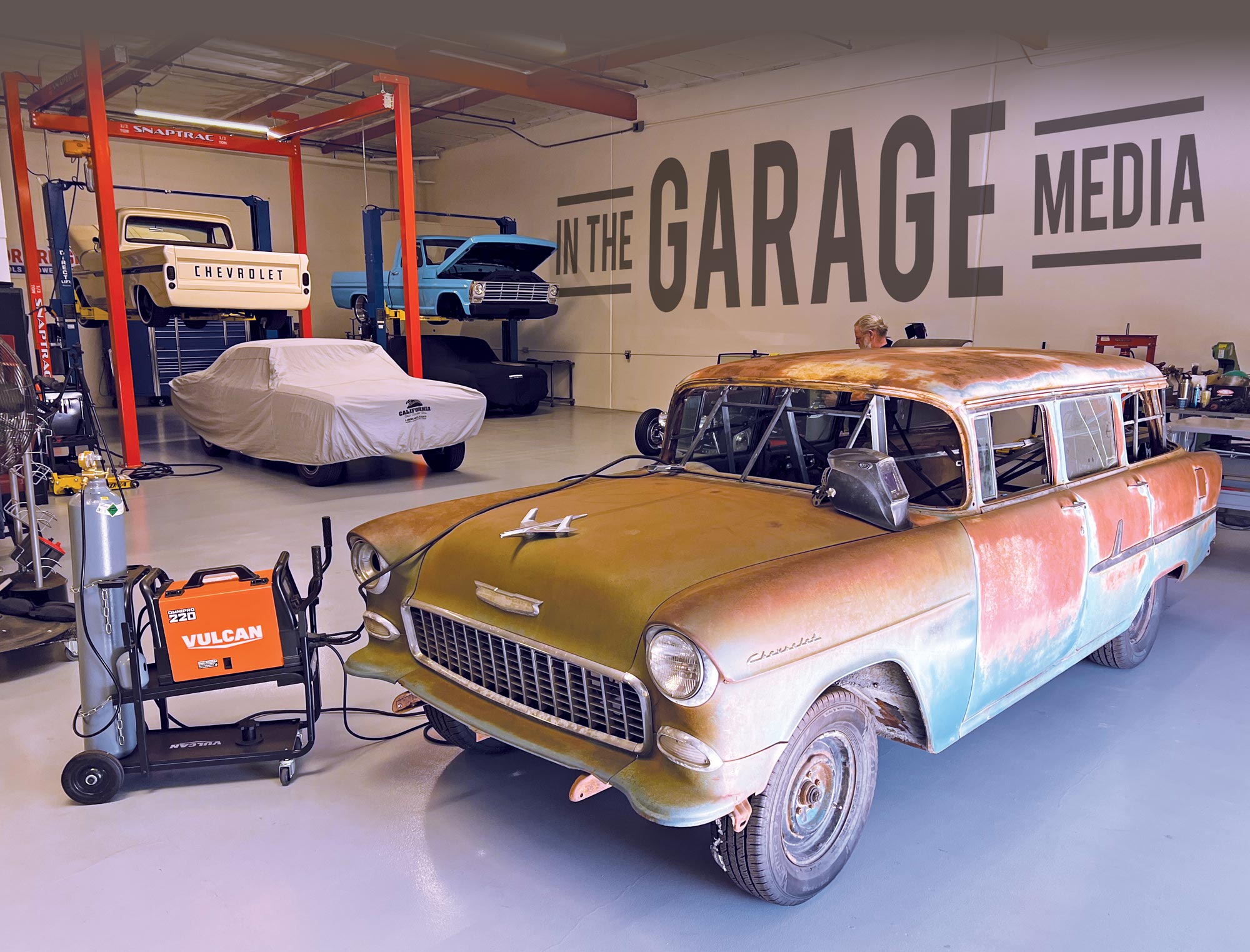
ometimes hot rodders have been known to “drive the long way around the barn” to get to their final goal. It sure seems like that’s the case for our Modern Rodding Project ’55 Chevy Wagon. We’ve been tinkering with small projects so far, like removing and replacing the spare tirewell as well as the tailgate (special thanks to Danchuk for helping us out on those projects). But the latest effort is a doozy. We want to keep the patina look but upgrade and make roadworthy the remainder of our ’55 Chevy wagon.
The first step was to go through the self-analysis of the sheetmetal. Well, it’s loaded with what you would expect from years of hard-earned patina—thoroughly abused paint (or lack thereof) and rust. Really good rust; you know, the kind that you can see through! That was our first clue that something had to be done to our ’55 Chevy wagon roof—patina is good, holes aren’t. Upon close inspection and the fact that we could see through the holes in the roof in the rain gutter area had us scratching our heads. Apparently, Plato, the Greek philosopher dude, had a rust problem on his Chevy wagon. His writings were once translated to say: “The true creator is necessity, who is the mother of our invention.” And that’s exactly where we found ourselves. We needed to think and come up with a solution.

 Photography by Wes Allison
Photography by Wes Allisonhose who have been around the hot rod world for some time should know Southern California’s Richard Graves; or possibly his shop’s name, Richard’s Wheel & Chassis, will ring true. Richard has built a number of hot rods for customers and himself over the past 60-plus years, and that includes his current ride. Richard’s ’32 Ford highboy sedan delivery has been seen on the road for years.
As a member of the Early Times Car Club (founded in 1965) he joined in 1969 and continues to participate some 50-plus years later. (There’s a great story behind the Early Times Car Club and many of its members—but that’s a story for a later date.) Richard consistently shows up with his ’32 Ford highboy sedan delivery at local events time and again. In fact, his garage served as the beginning for the Early Times Mid-Winter Rod Run & Garage Tour. This event has a long history, some 41 years and growing in the SoCal rodding scene. His familiar bearded presence is a welcomed sight as he brings a wide breadth of hot rod knowledge and experience to the car scene.
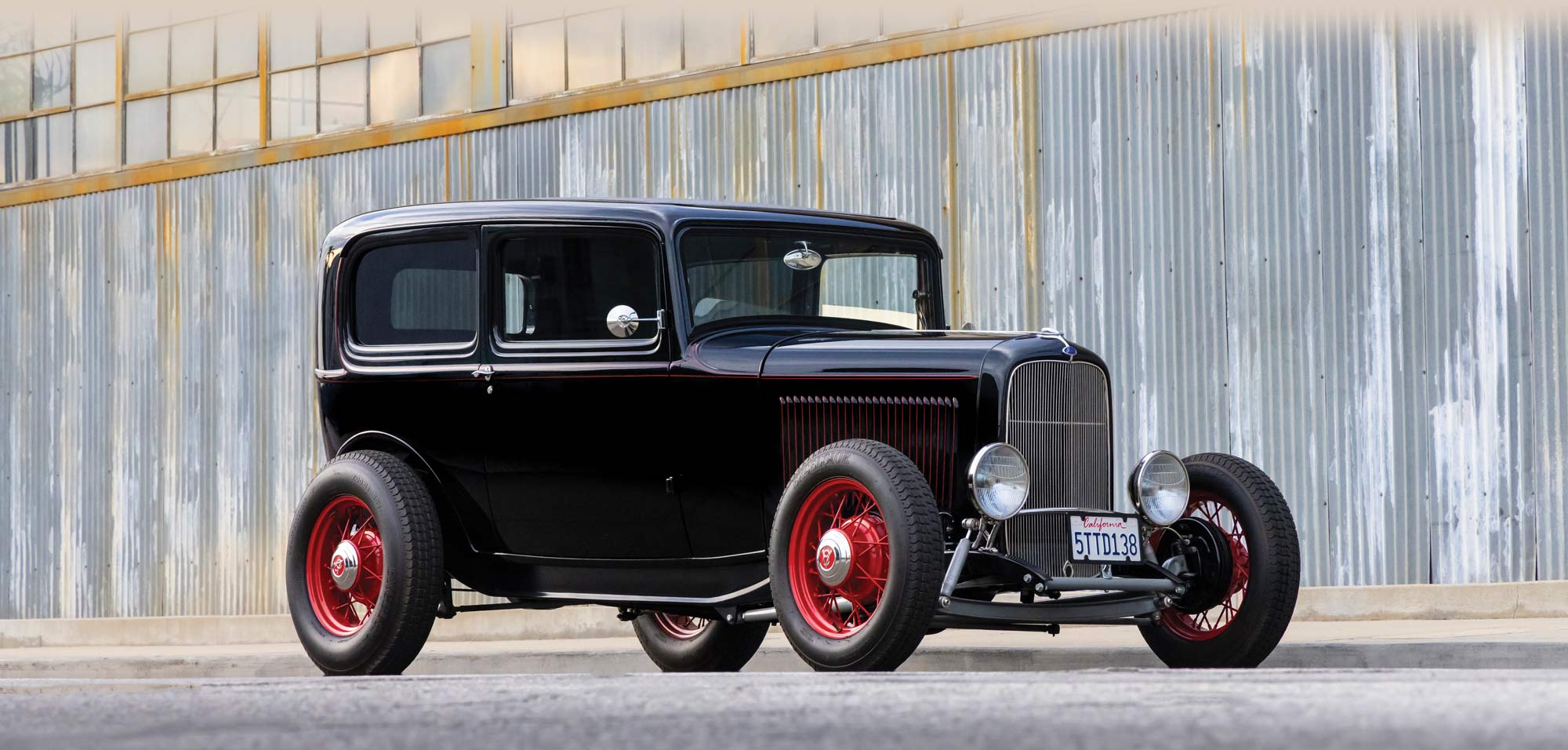
Modern Rodding Tech

 Photography by Nate Nelson
Photography by Nate Nelson
 Photography by Nate Nelson
Photography by Nate Nelsonhe hydraulic clutch turned everyday clutch operation into a pleasure rather than a session at the gym. I’m sure there are plenty of us who can remember the days of waiting at a stoplight as we patiently counted down the seconds for the light to turn green, all the while holding in the clutch pedal. The obligatory leg shakes and cramps are still fresh in our minds. All because we had opted to run a 3,000-pound three-finger clutch. Ah, the days of sheer brute force. The advent of the hydraulic clutch has relieved us of this discomfort. But it’s an offering from American Powertrain in their HydraMax bolt-in underdash hydraulic clutch and pedal system that has taken the hydraulic clutch installation to a new level of ease, comfort, and performance.

 Photography by John Jackson
Photography by John Jacksonself-proclaimed and unabashed fan of the 1977 movie Smokey and The Bandit, Chris Ryan of Ryan’s Rod & Kustom (RR&K), located in South Carolina, proudly admits to watching it upwards of 10,000 times. (Well, maybe not literally but a lot.) The idea behind building this ’78 Pontiac Firebird Trans Am was to end up with a fun shop car that could do “some really epic” burnouts. Growing up in the ’70s and ’80s Chris enjoyed the ’70s muscle car look, particularly the Trans Am body style.
It should also be noted that one of Chris’ talented staff was overheard saying, “Bullsh*t Boss, we all know where this is gonna end up.” Chris freely admits from the onset that the build began to take on a serious note. To give you an idea how far Chris jumped off the “pier,” let’s look at a simple and common modification. He asked one of this shop staff to cut, reshape, and fit the rear bumper—five times! Well, everyone knew where this Pontiac Firebird Trans Am was going to end and that would be the Trans Am of all Trans Ams.
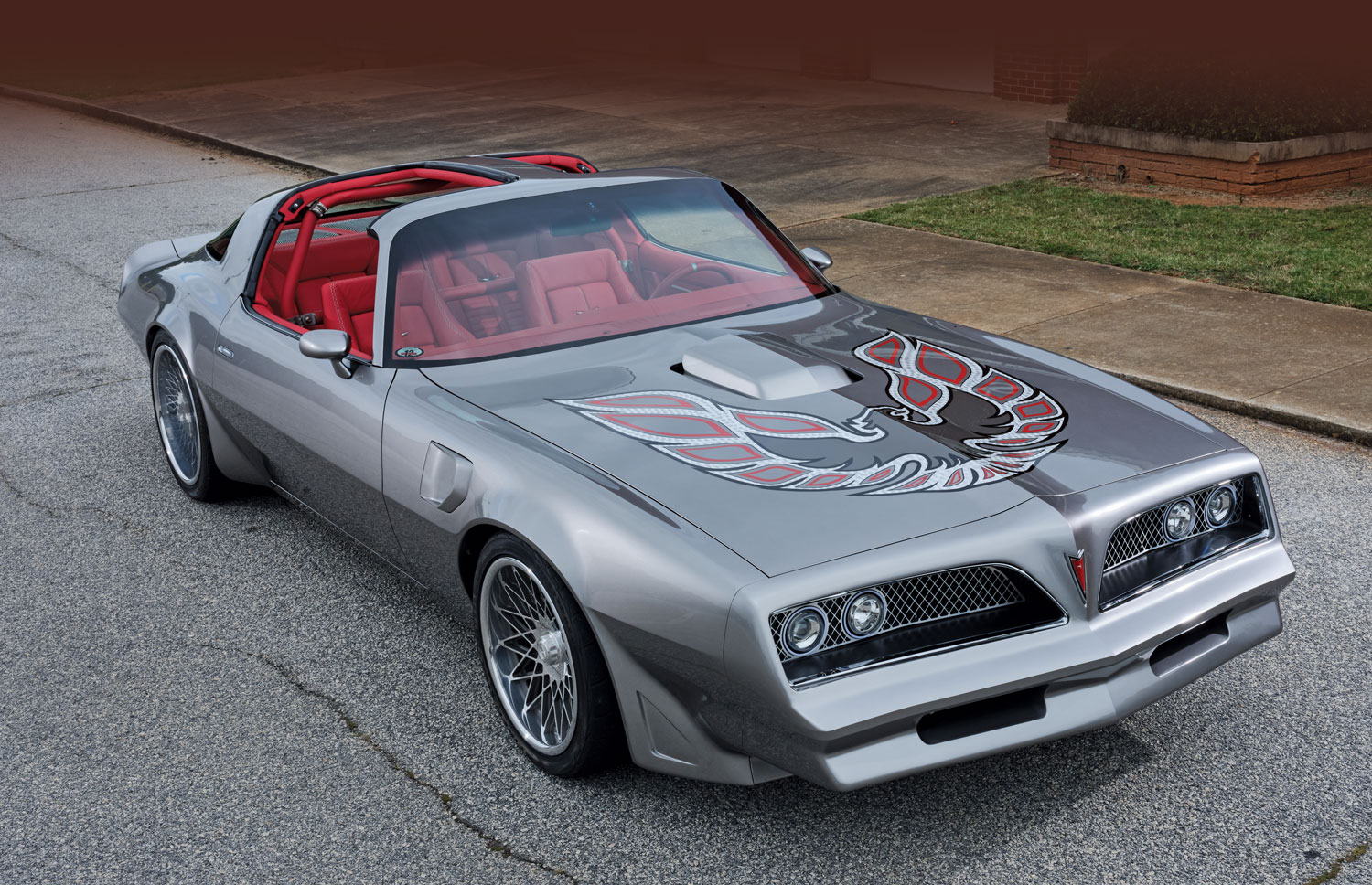
Modern Rodding TECH
InTheGarageMedia.com

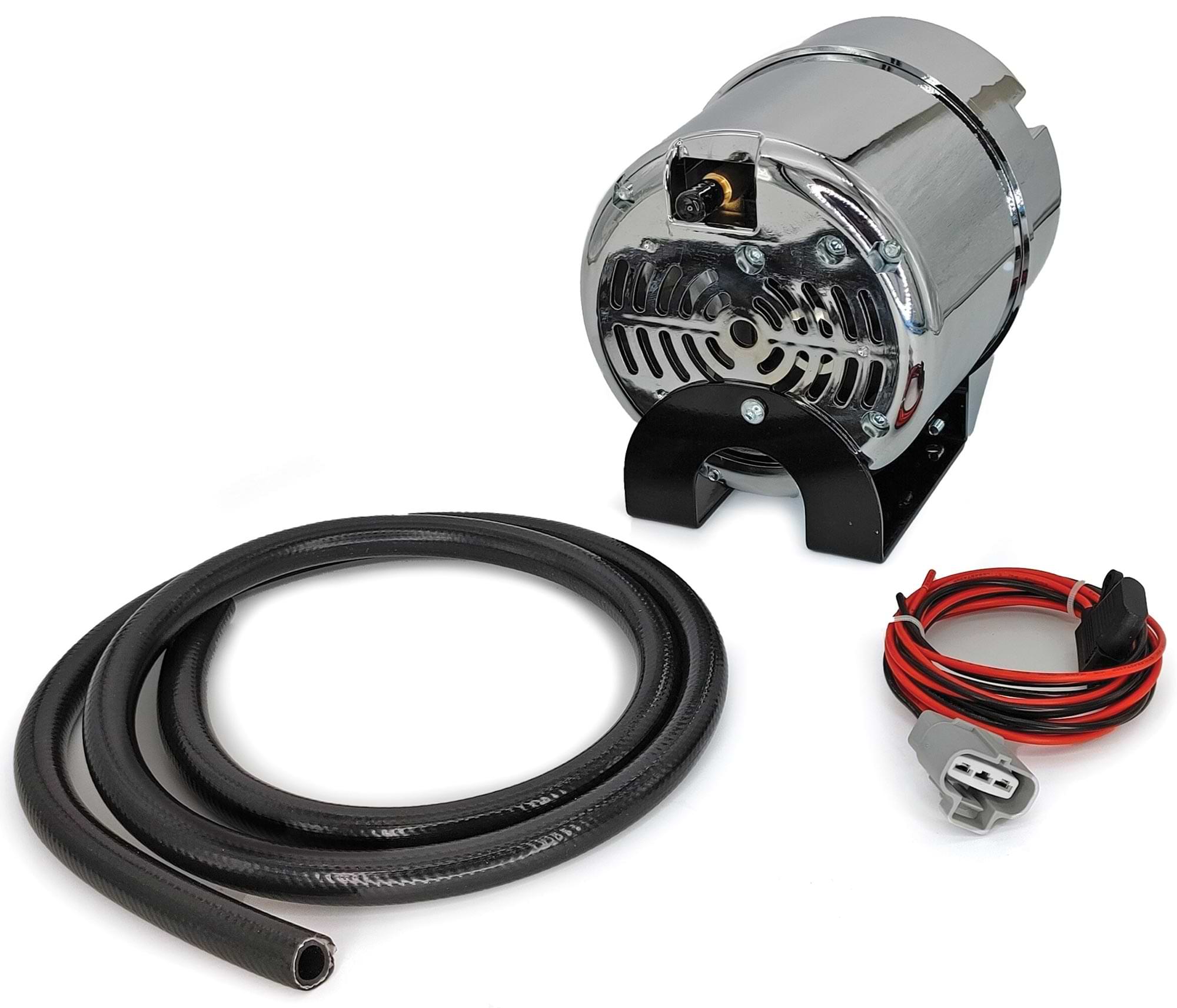

 Photography by THE AUTHOR & Granatelli Motor Sports
Photography by THE AUTHOR & Granatelli Motor Sportshe car (most likely) parked in your driveway has some form of a factory vacuum pump. It functions via one of two ways: as a mechanical engine driven or electrically powered pump. It generates additional (supplemental) vacuum that is in addition to what the engine can produce. While new cars are designed with these as part of the integral workings, hot rodders need to take the needs this pump provides into consideration. We have a way for you to manage this dilemma: the Granatelli Motor Sports 12V Electric Vacuum Pump Kit.
Whether it be the stocker in your driveway or the hot rod tucked away in your garage, there is every likelihood a function such as power brakes, wipers, or headlight doors, or some other form of engine management requires ample vacuum to properly operate. Many high-performance engines can be vacuum deficient; we see this in the hot rod industry often. Does your hot rod have a remote vacuum pump, or should it have one? Vacuum pumps are required in engines where the necessary vacuum cannot be garnered through the intake manifold. Think about the following. If your gasoline-powered engine has variable valve timing, direct fuel injection, or a turbocharger there’s a good chance you will have need for additional vacuum. A little less exotic, how about power brakes or the controls on your heating and air conditioning system? Oh, did I mention that an auxiliary vacuum pump, such as the Granatelli 12V electrical unit, can add documented 10 to 35 usable horsepower back into the engine? That alone is a great reason.
InTheGarageMedia.com
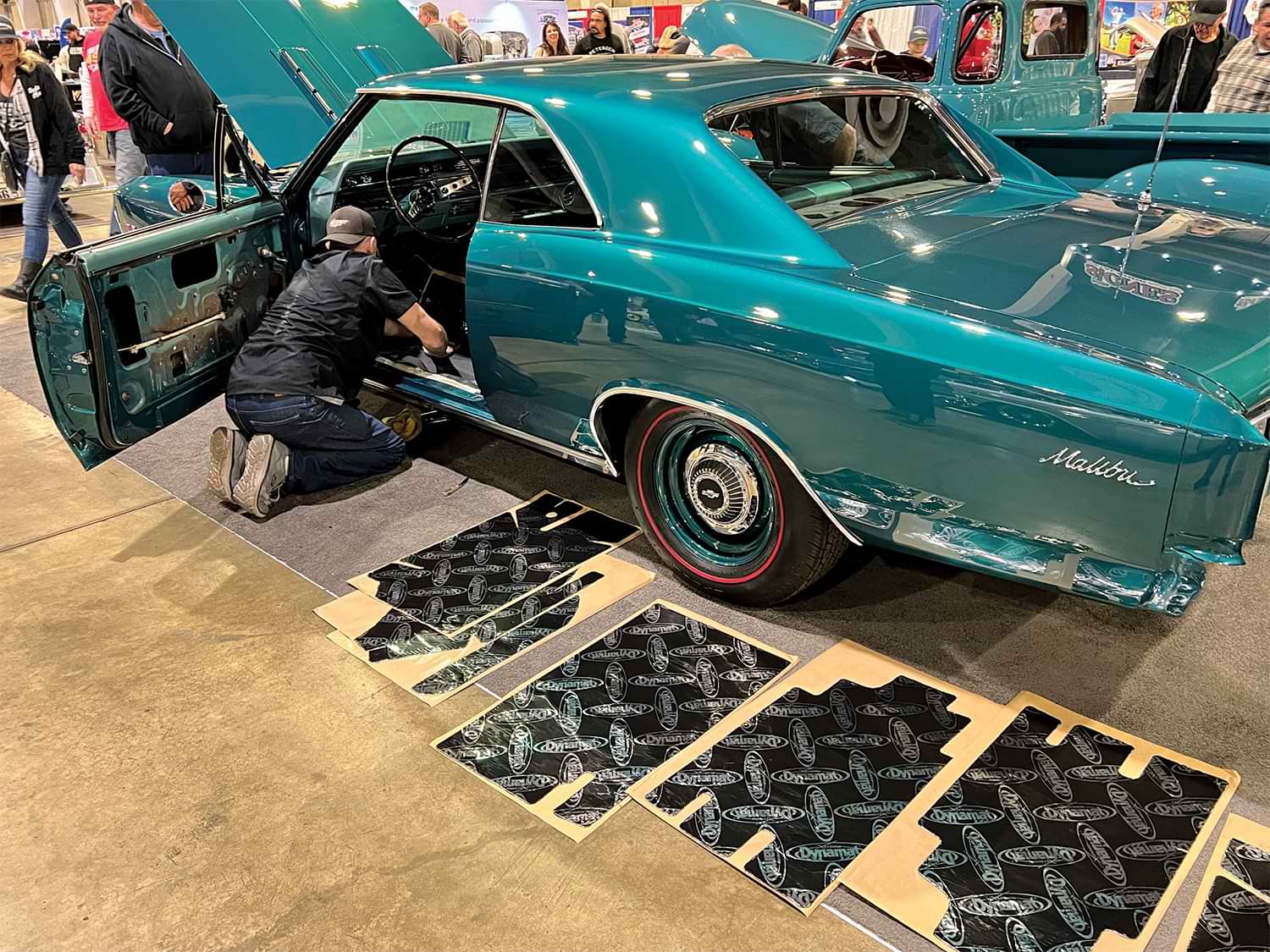
 Photography by THE AUTHOR & Brian Brennan
Photography by THE AUTHOR & Brian Brennan
hat better way to demonstrate Dynamat’s Xtreme Custom Cut Kit made for GM A-body cars can easily be installed by using just a Dyna-Roller than to prove it in front of hundreds of folks at the 2022 Grand National Roadster Show? Custom cut means Dynamat’s sound-damping material is precut to fit a specific make of car or truck and only requires peel and stick for installation. Then mash it flat with a Dyna-Roller and it’s done.
The saga of this ’66 Chevelle Malibu project dates back over five years ago when I had just been given the editorship of Chevelle magazine. I had never owned a Chevelle for the street, but in the mid ’70s I did buy a few ’66 Malibus for around $200 so my race crazy friends and I could cut them up to roundy round race at Irwindale’s Speedway 605 on Saturday night.
The 21st century was high time for me to repent for the Chevelles I had destroyed racing decades ago and, besides, I didn’t want readers asking if I owned a Chevelle and didn’t. The ’66 SS396 Chevelle has always been a favorite of mine since early 1966 when my dad and I searched for SS396s on Clippinger Chevrolet’s new car lot in Covina, California. It was spotting the distinctive twin inline scoops on the SS396 hoods that sped up our search locating SS396s on Clippinger’s lot.
View Index
View Index







